AFTER settling in at Port Vila, the subject of last week’s post, I joined the Australian couple I’d met, Alice and her husband Werner, for a trip around the island. We agreed to take the main ring road, shown in dark red in the following map, and to follow it in a counterclockwise direction from Port Vila, till we got back to where we had started.
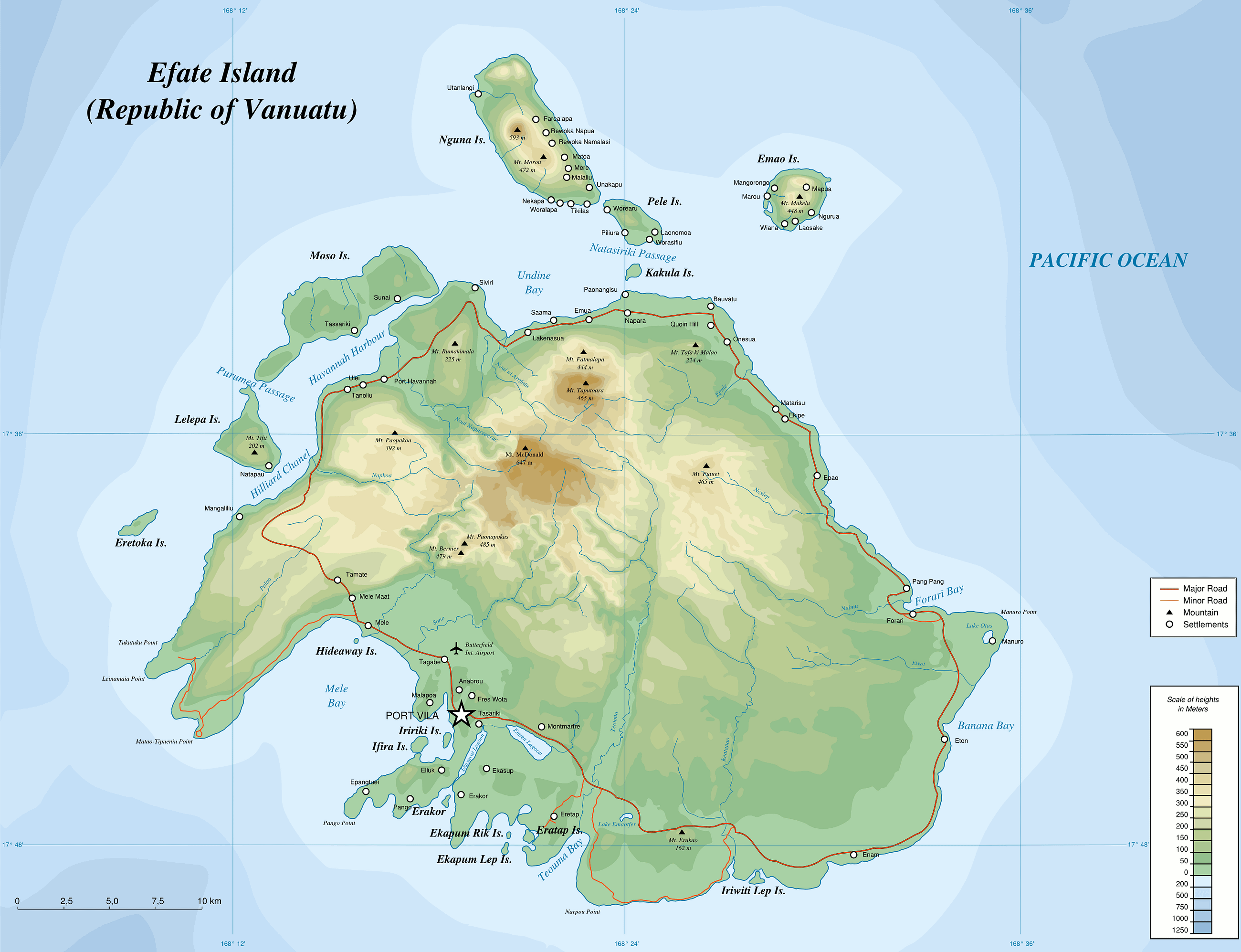
Although, in my case, I was going to stop just short of Port Vila for a stay at Hideaway Island, just off the coast at Mele.
Alice and Werner teamed up with me to rent a van driven by a man named Peter to take us around the island. This cost VT 13,000 for the three of us, which was quite good value at NZ $64 each, because if you book casually as individuals, you could pay about NZ $230 each. So, it pays to be organised and pay a lump sum.
Alice and Werner lived in Australia. They had been to Vanuatu about eight times and were paying about the equivalent of NZ $3,500 on a package deal for the two of them to travel to Vanuatu, stay, and come back.
At several places along the ring road, we came across a public map on a billboard or information panel. This public map shows how the most populated areas (‘Haos & Setelmen’) are on the southern shore of Efate, where you also find Port Vila. It also shows the village of Rentapao in the southeast, an important waypoint because that is where the outer suburbs of Port Vila end.
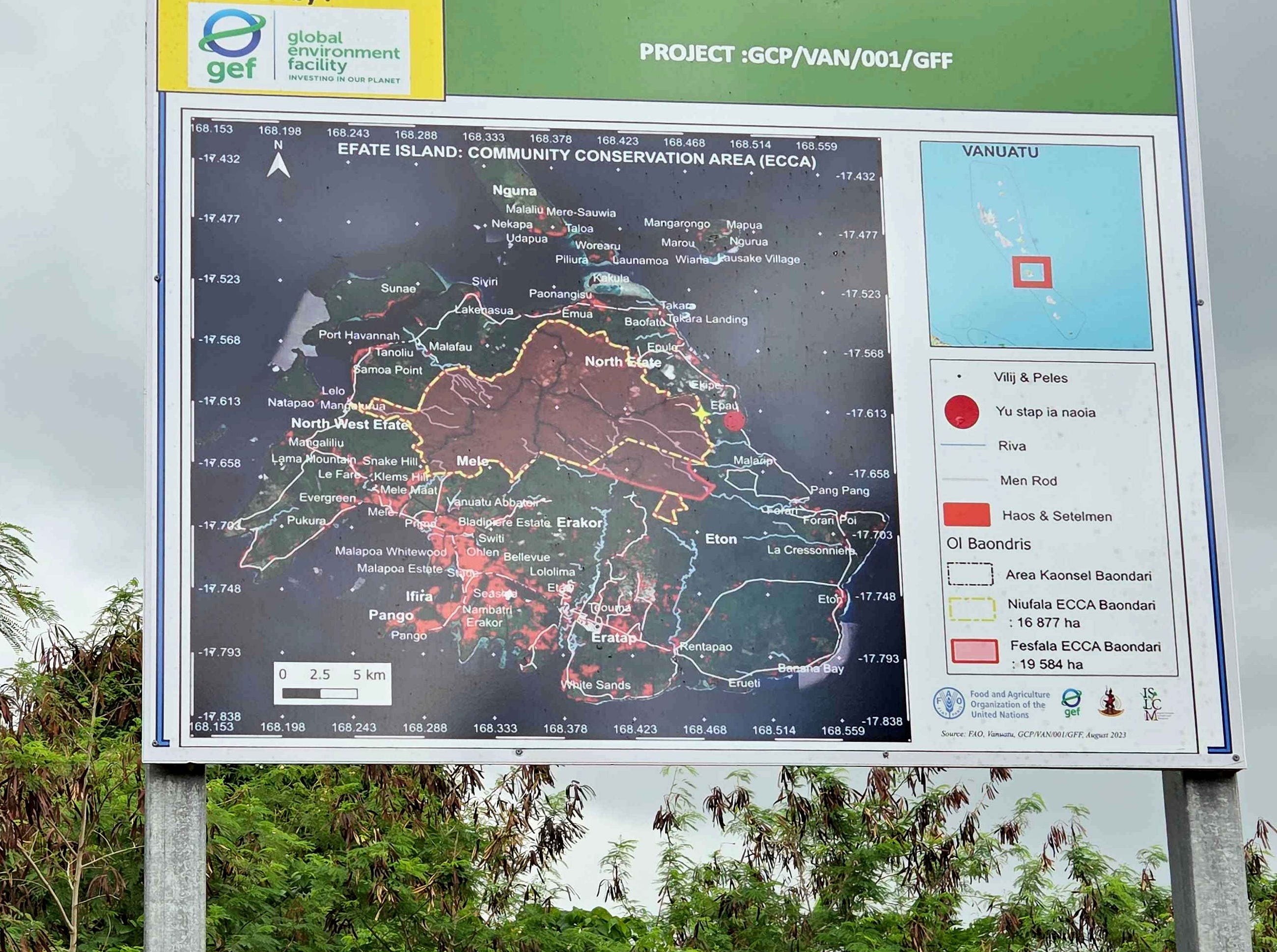
Also, Rentapao is where you find the Rarru Falls, or Rarru Cascades, on the Rentapao River; a broad cascade with a swimmable bit below the main falls. It’s said that the water is quite cool: a plus on a hot day.
There is a lot of nice stuff on the coast south of Port Vila, which the main ring road misses as it runs inland of the many fingers of land that poke out into the sea along that coast. I must explore those areas later on sometime!
Anyhow, past Rentapao, things soon got a lot more traditional.
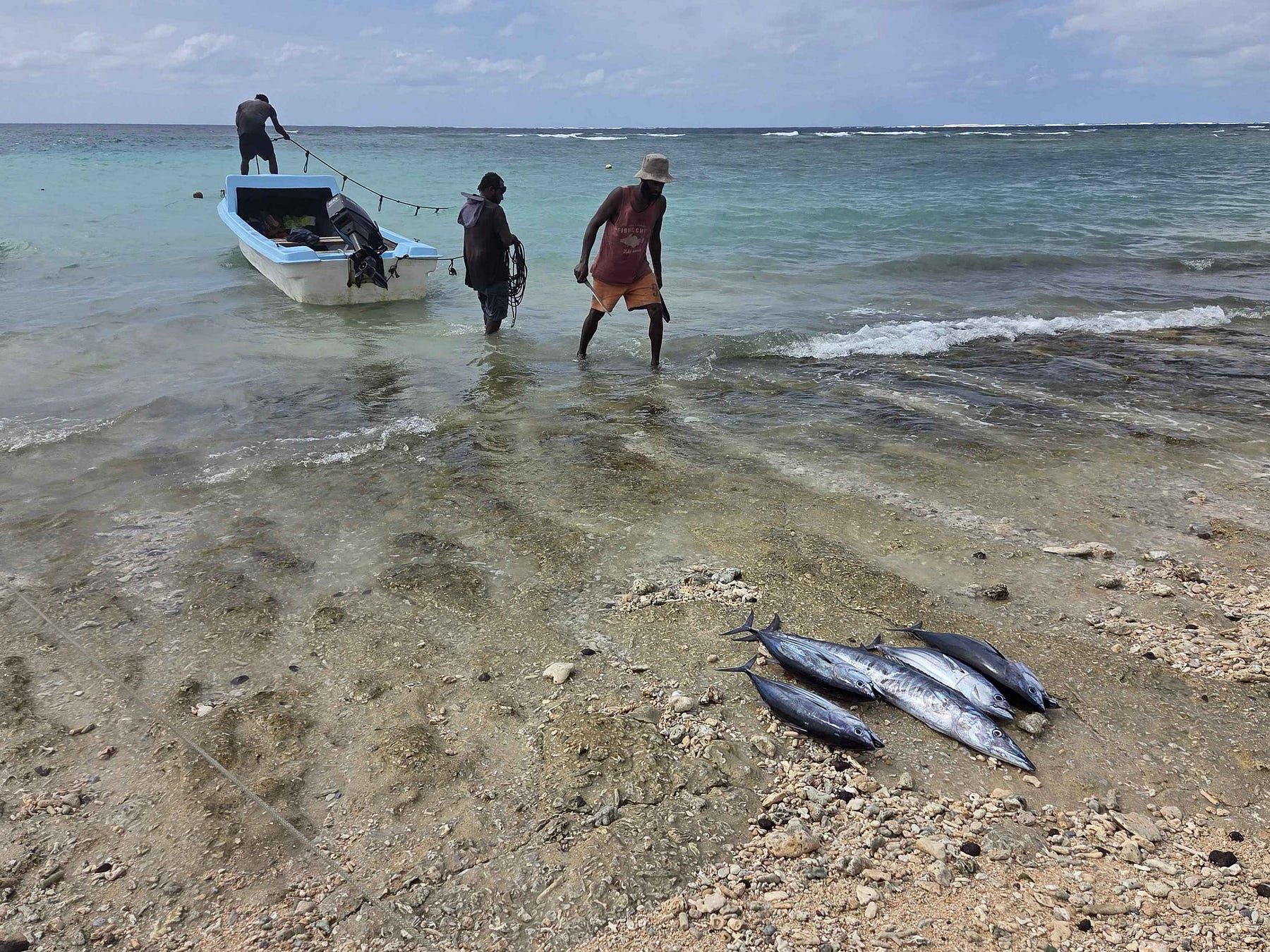
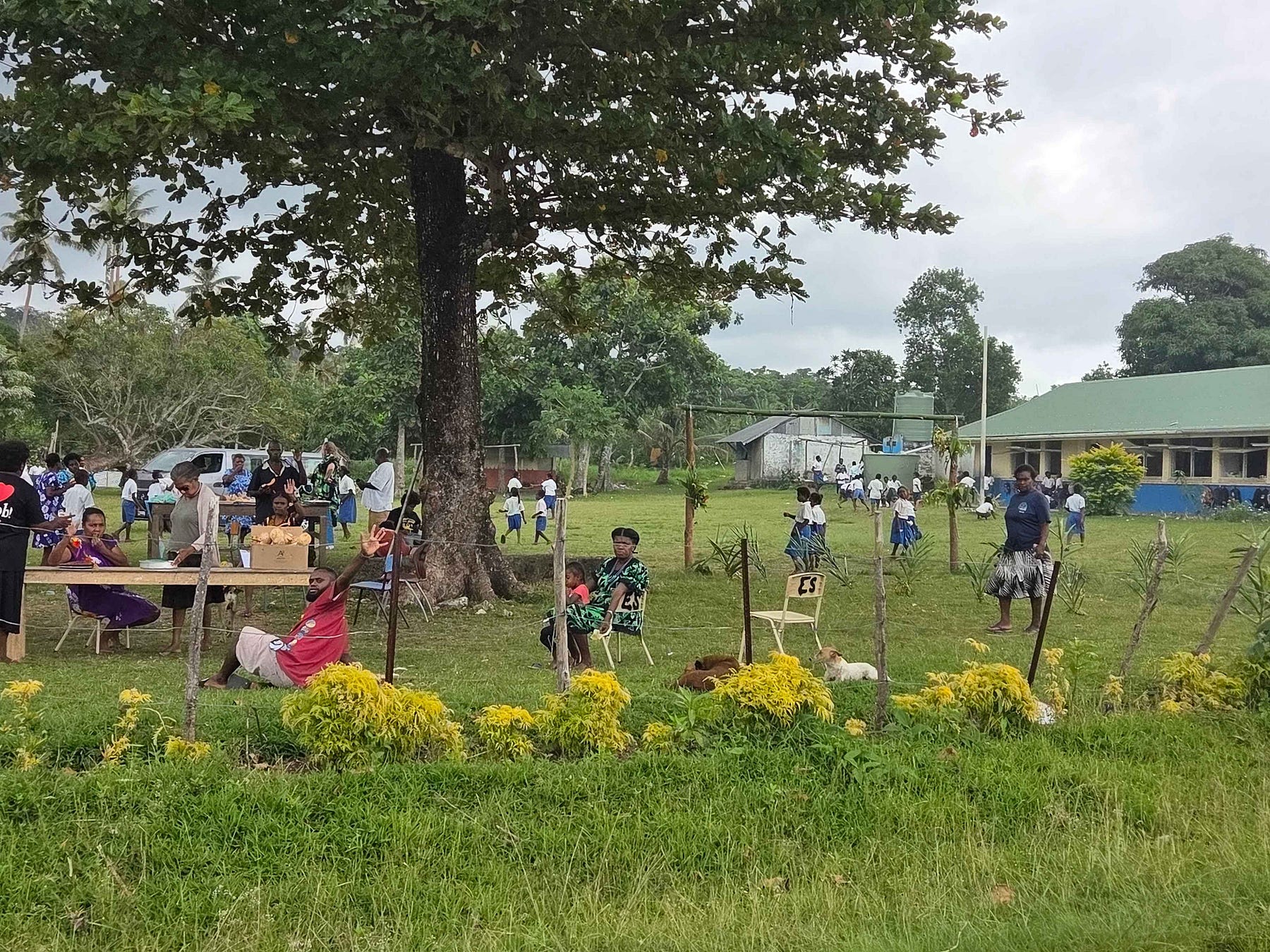
The next major attraction after Rarru Falls is the Blue Lagoon, also known as the Eton Natural Pool, on the southeast coast of the island.
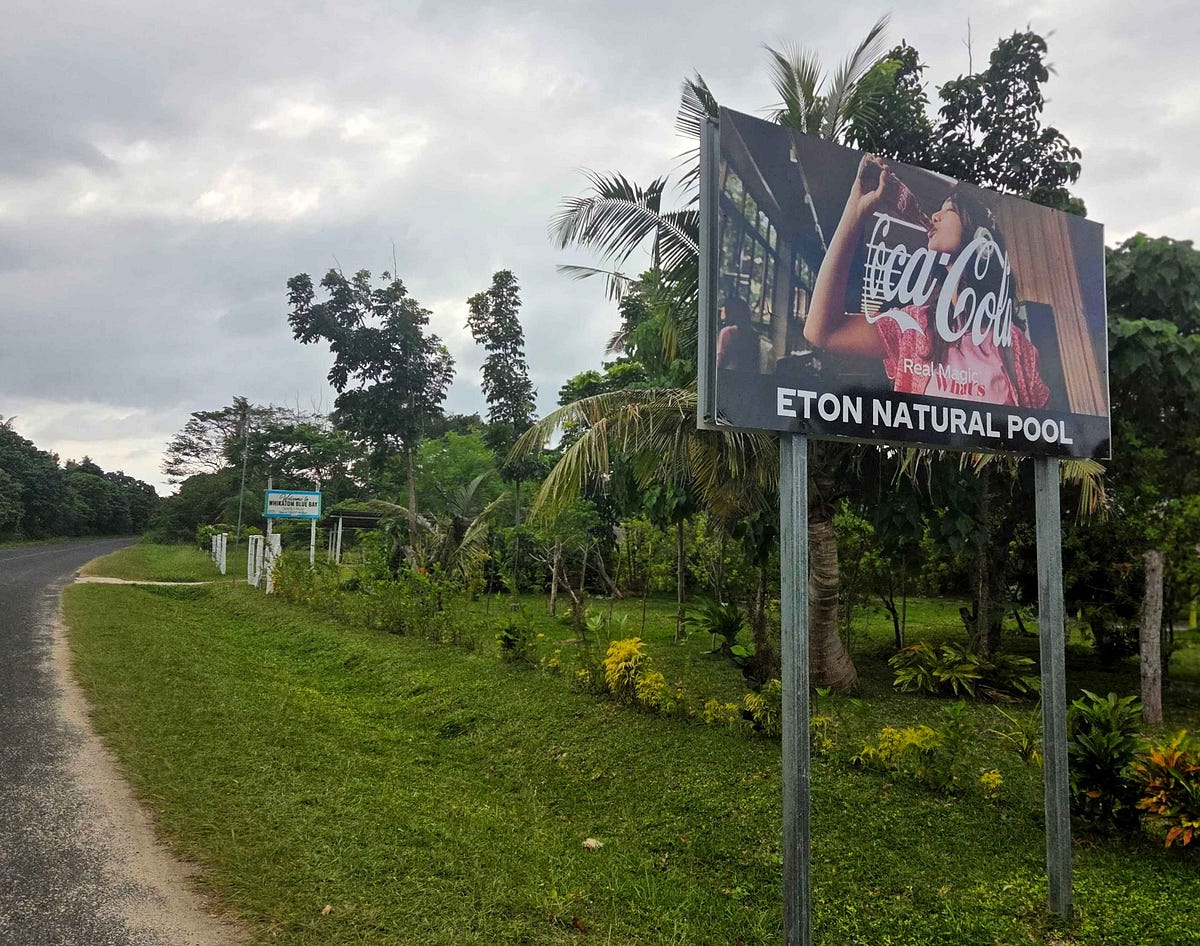
I’ve embedded a video from the Vanuatu Tourism Office:
A very short distance further, we came to the community of Eton, which has a couple of popular beaches, Sunrise Beach and Eton Beach, though it was a bit overcast when we passed through.
Carrying on, you go past Le Life Resort, which looked like it would be a great place to stay.
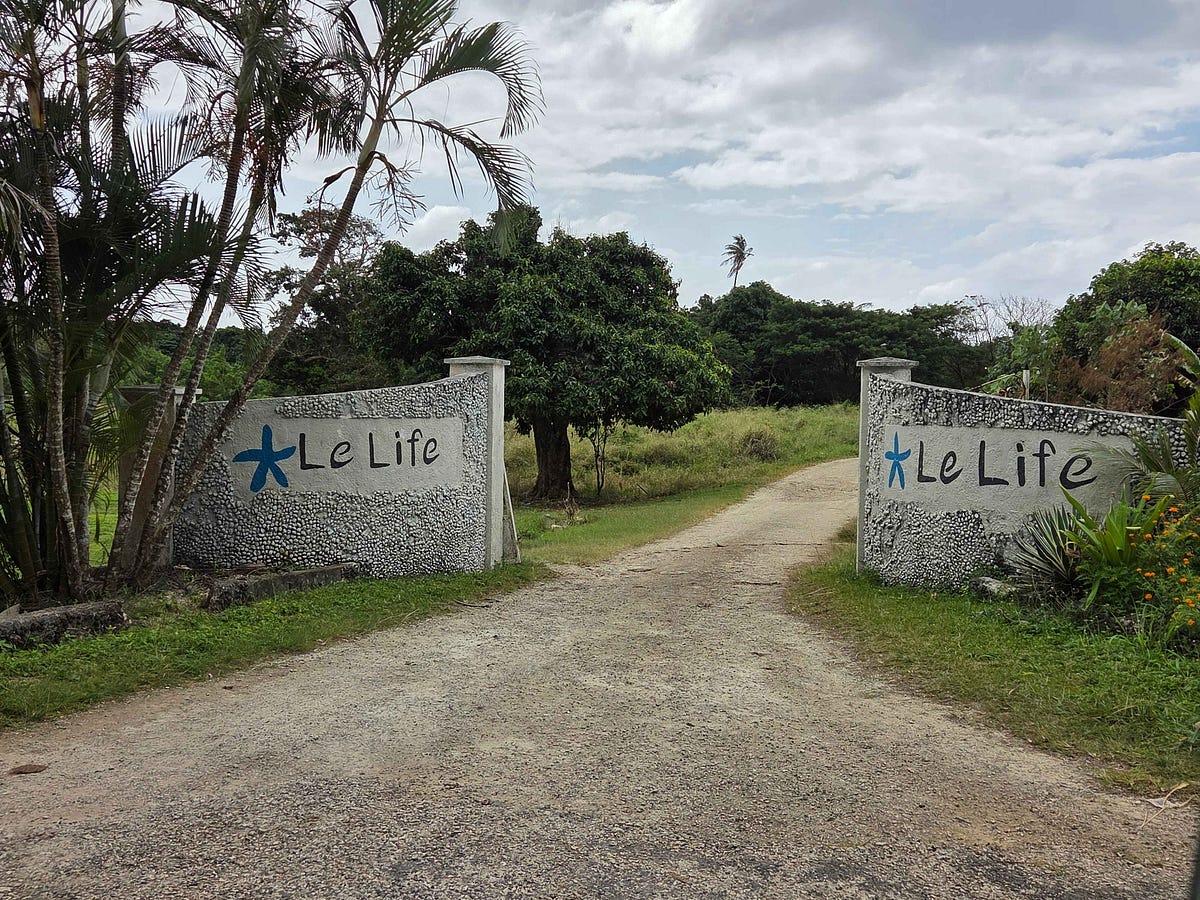
And then Sara Beach (non-https site as of the time of writing), and Nasinu Hot Springs, both of which looked pleasantly informal.
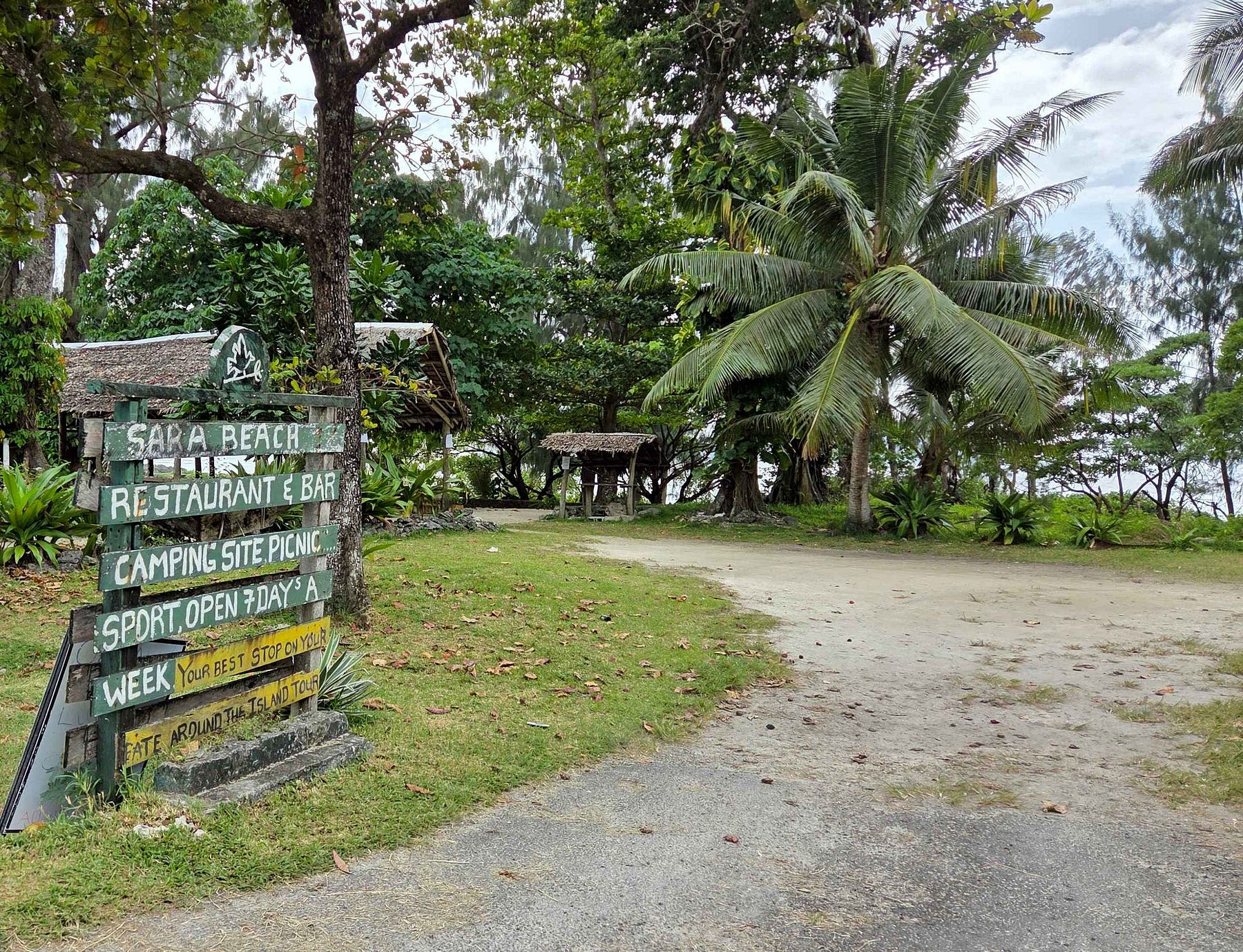
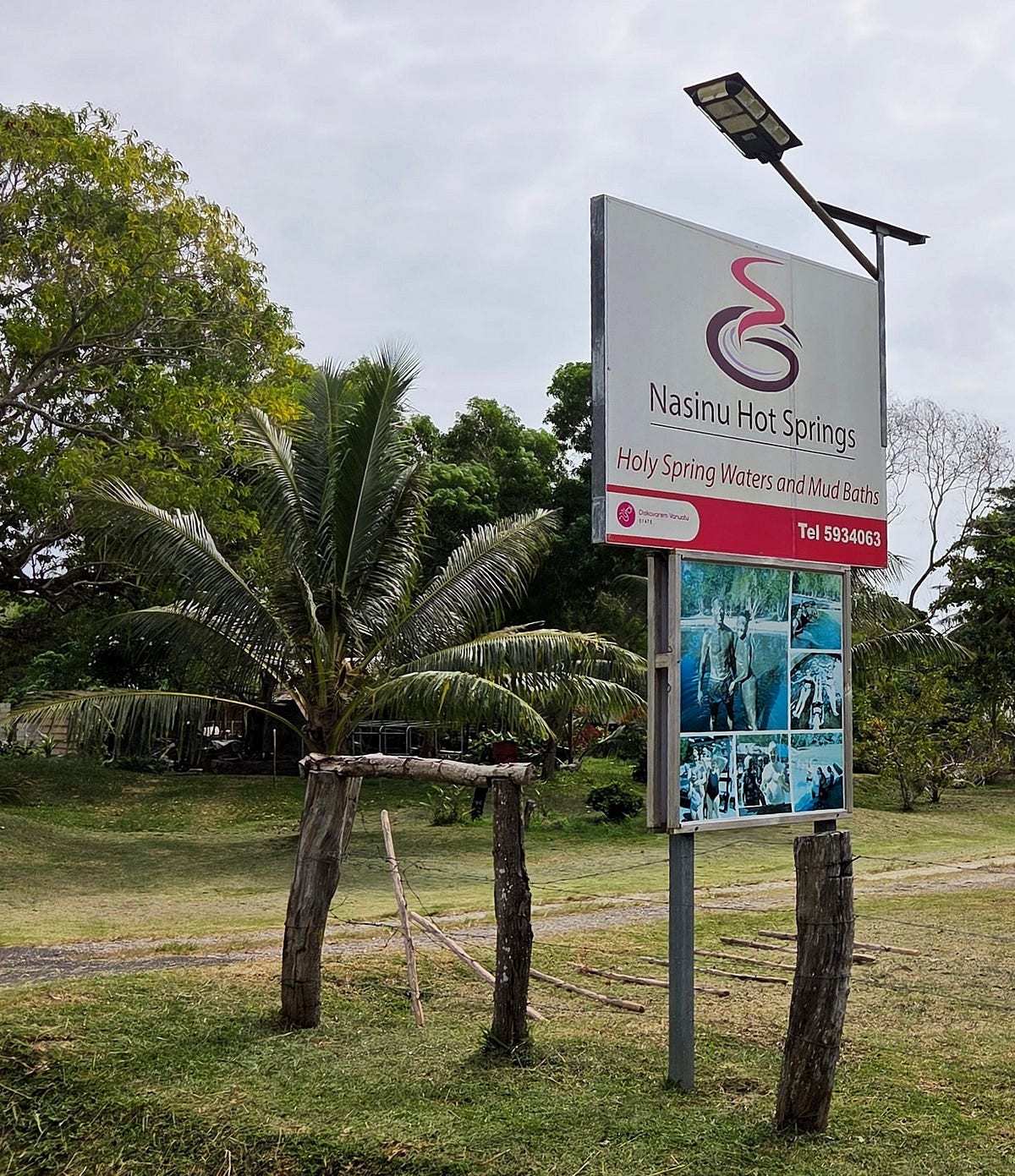
There are several highly visible offshore islands along this stretch of coast, including Emao Island.
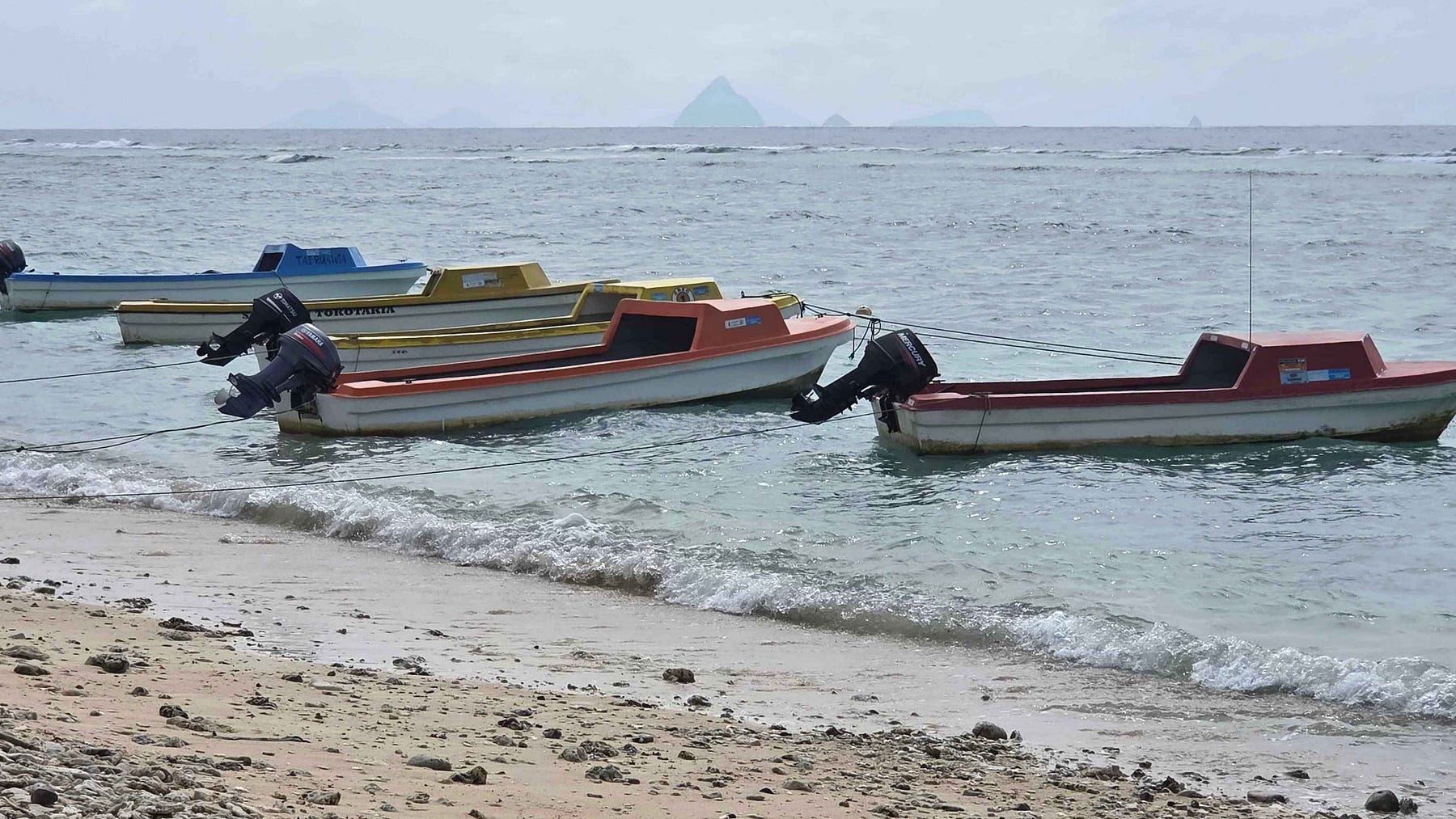
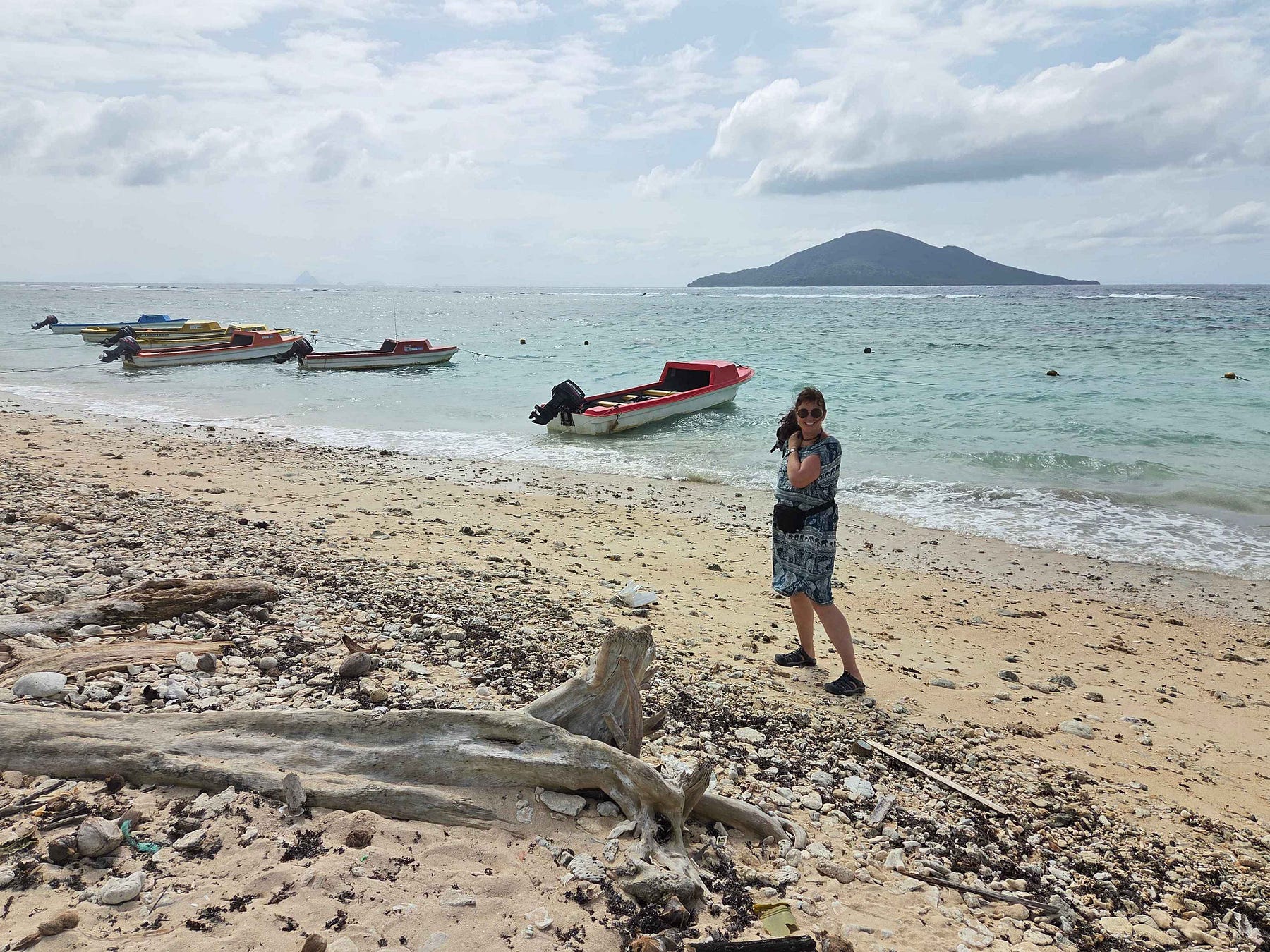
At the northern end of Efate, there is the World War II Relics Museum and a shallow lagoon surrounded by a coral reef. The lagoon contains a sunken World War II Corsair fighter plane, at a depth accessible to confident snorkellers.
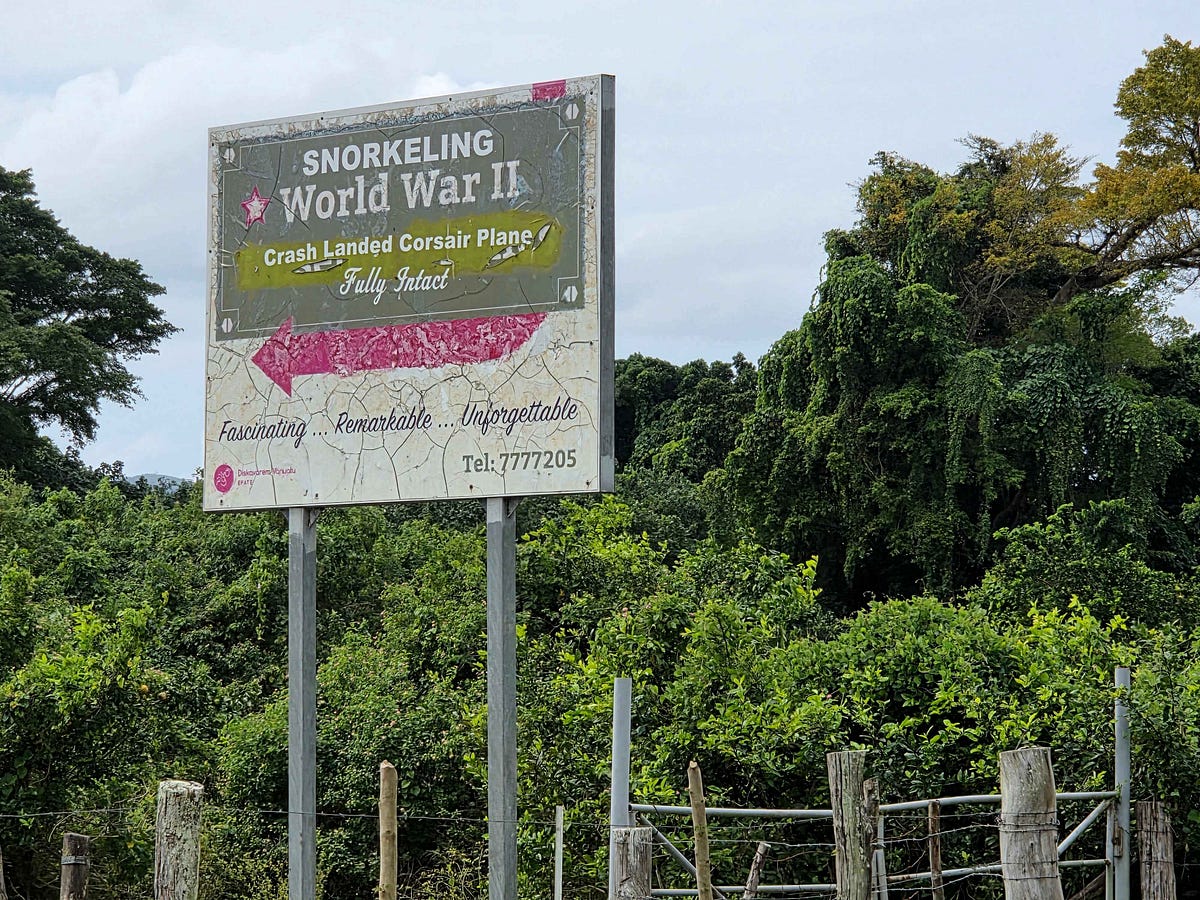
The next place we stopped was at a village called Saama, located on a particularly beautiful stretch of coast, where there are a couple of informal-looking resorts called Top Rock and E-Saama Enchanted Paradiso.

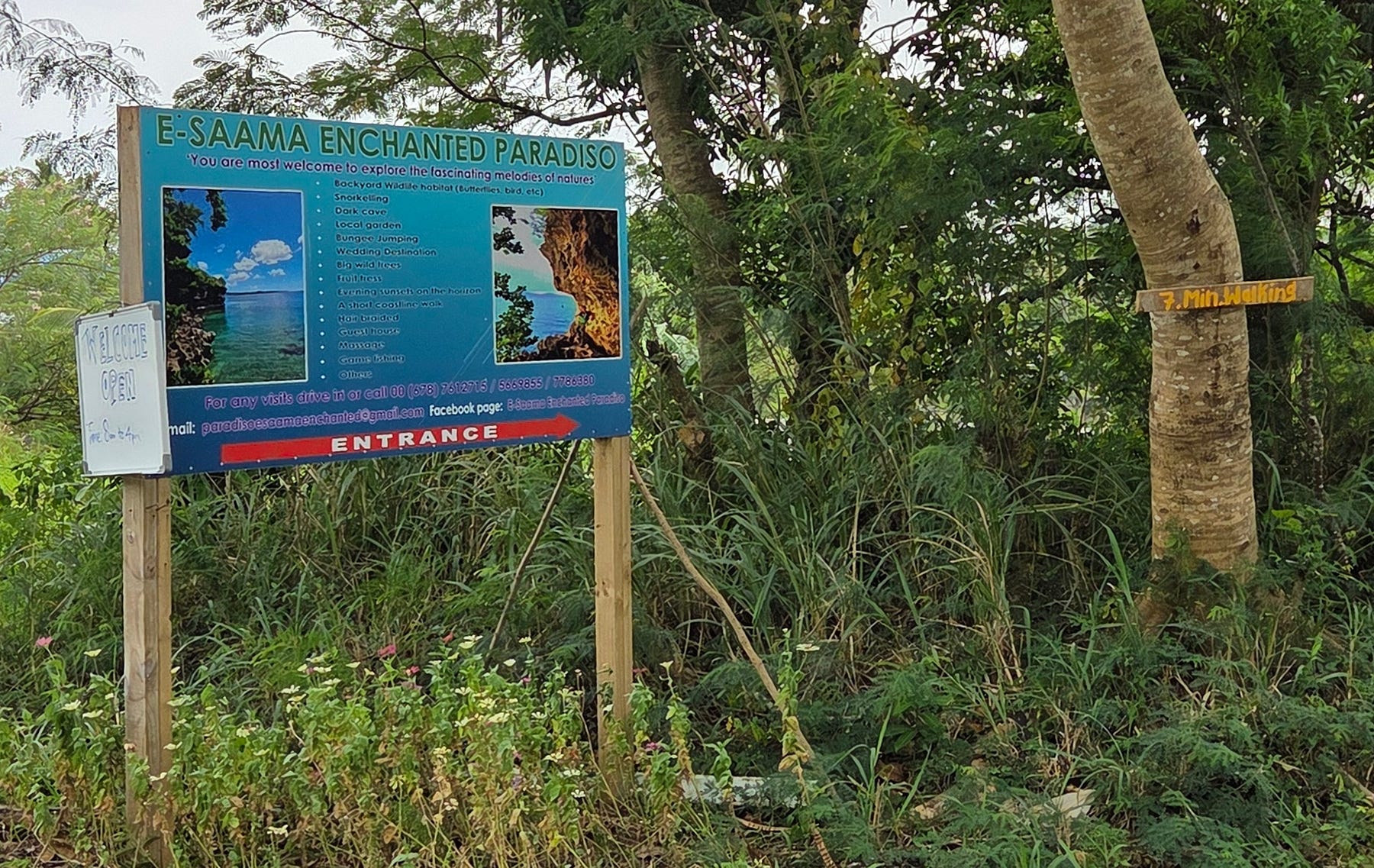
Again, Saama looked like it had first-rate charms for the visitor, yet was well off the fully commercial tourist trail at the same time.
Along the way, I had a small fish dish at a village stall, and got some good views of how people live.
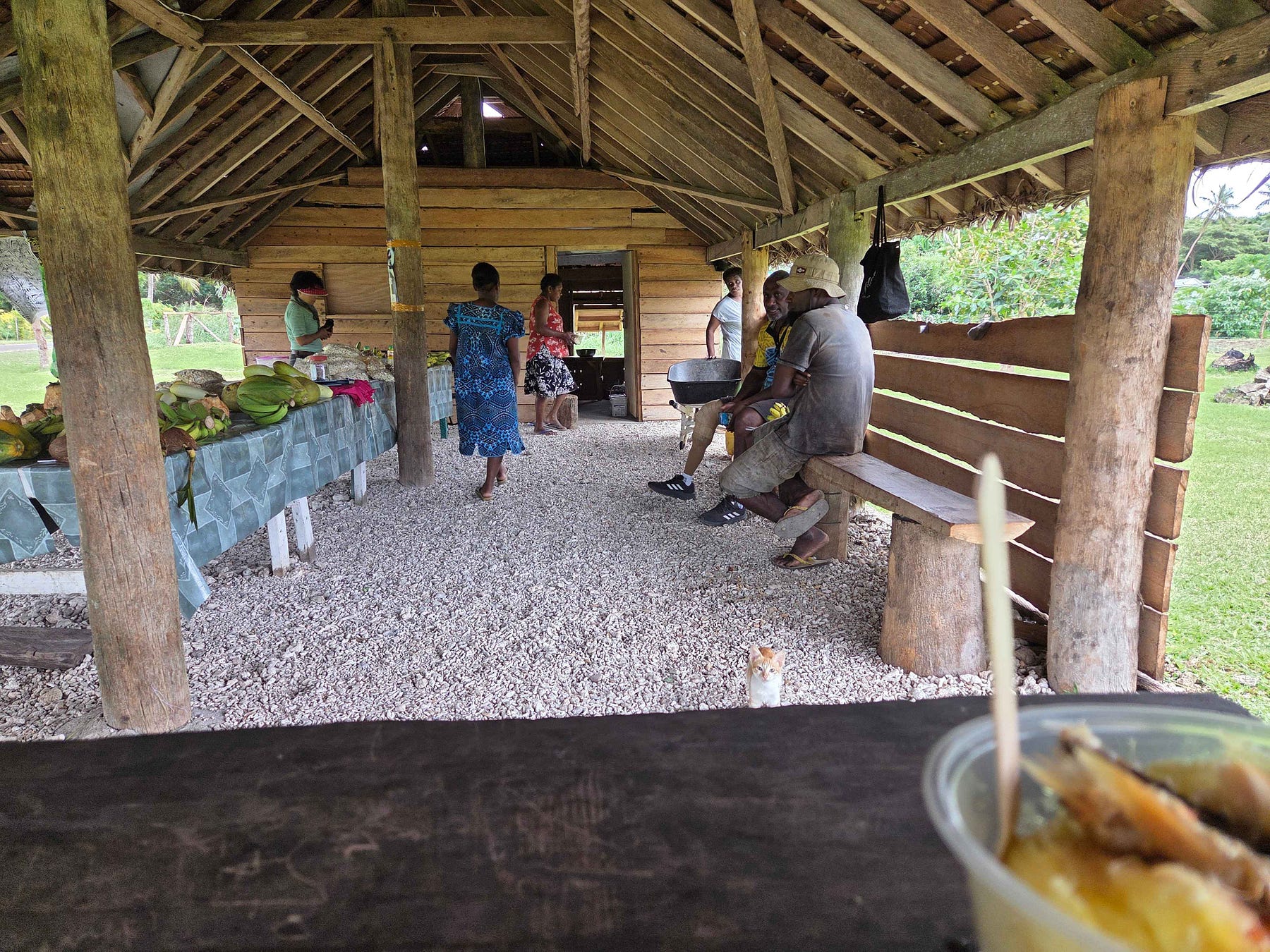
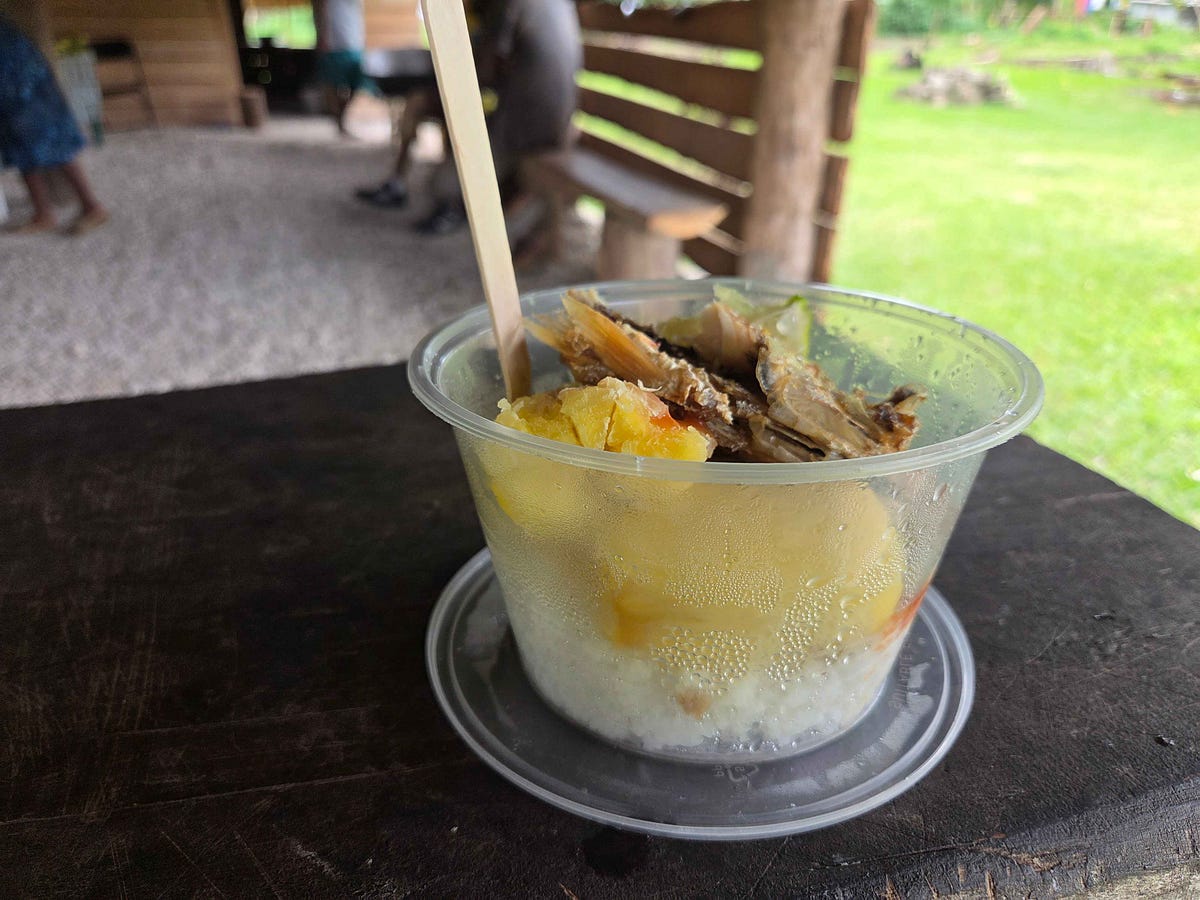
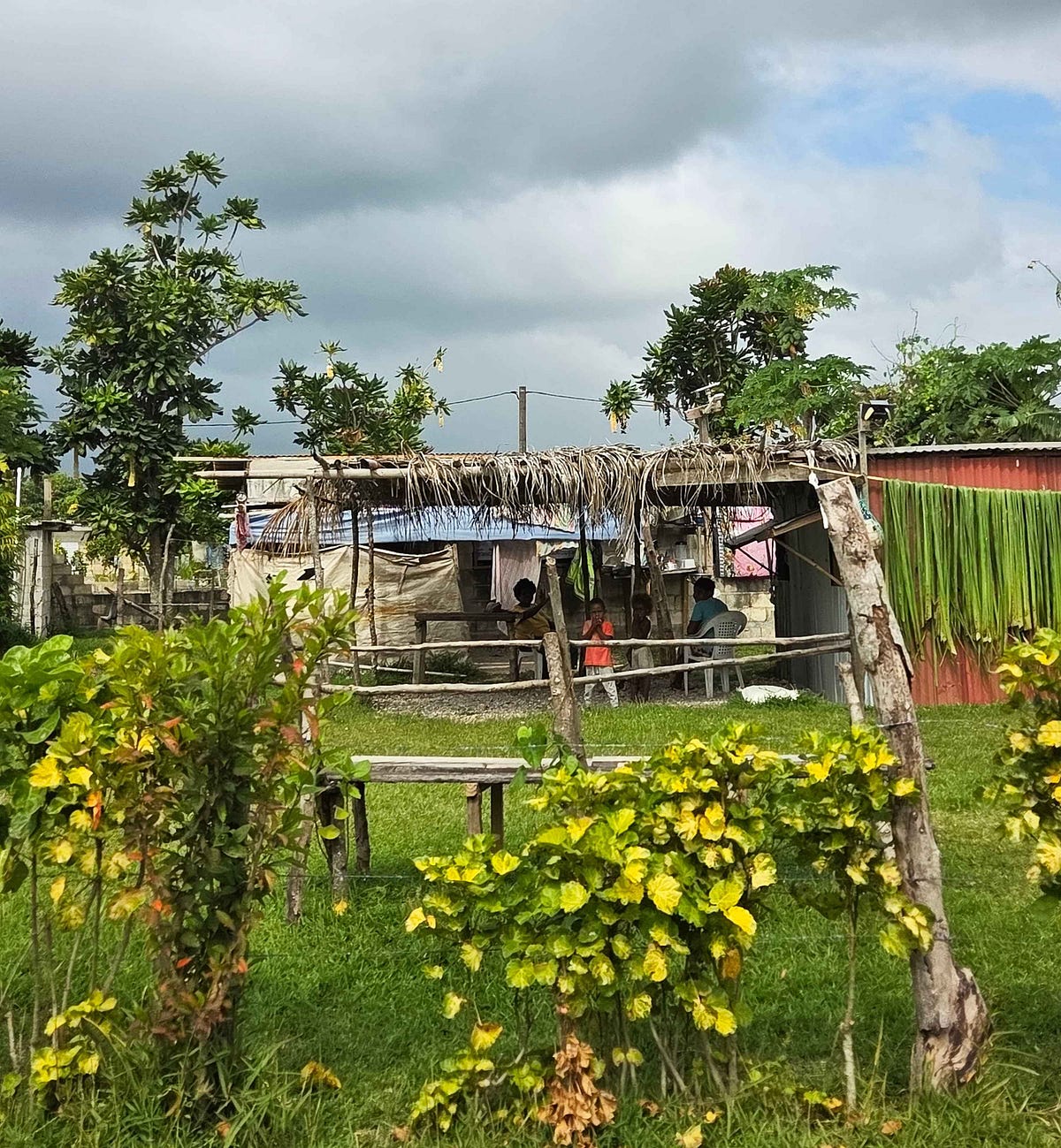
We also had a more substantial meal of snapper, which cost NZ $10 for a whole fish, and which was cooked on an open fire, which I show in the next photo.
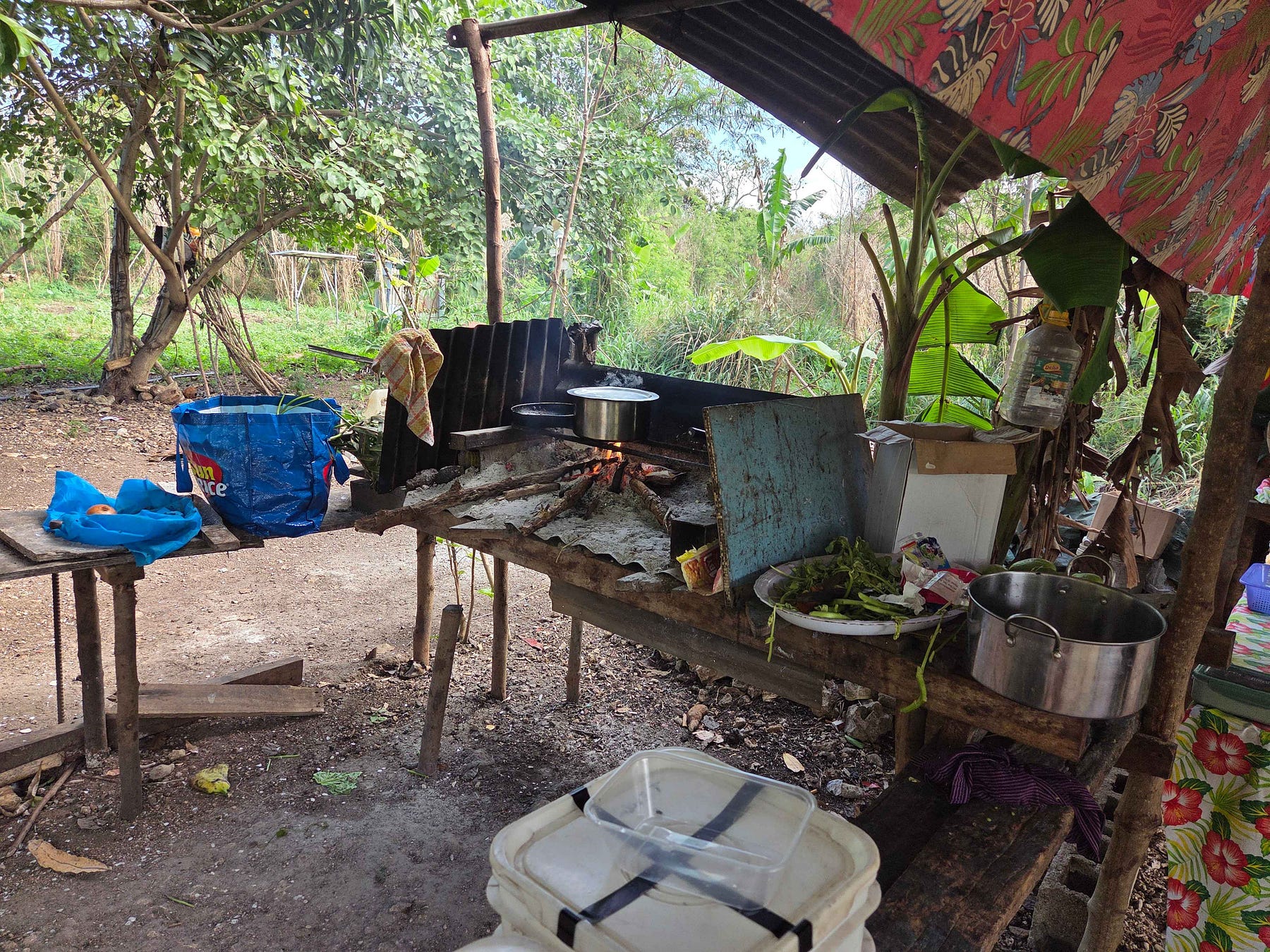
The following photo shows Alice tucking into the delicious snapper, which was just boiled with no seasoning, but so fresh.
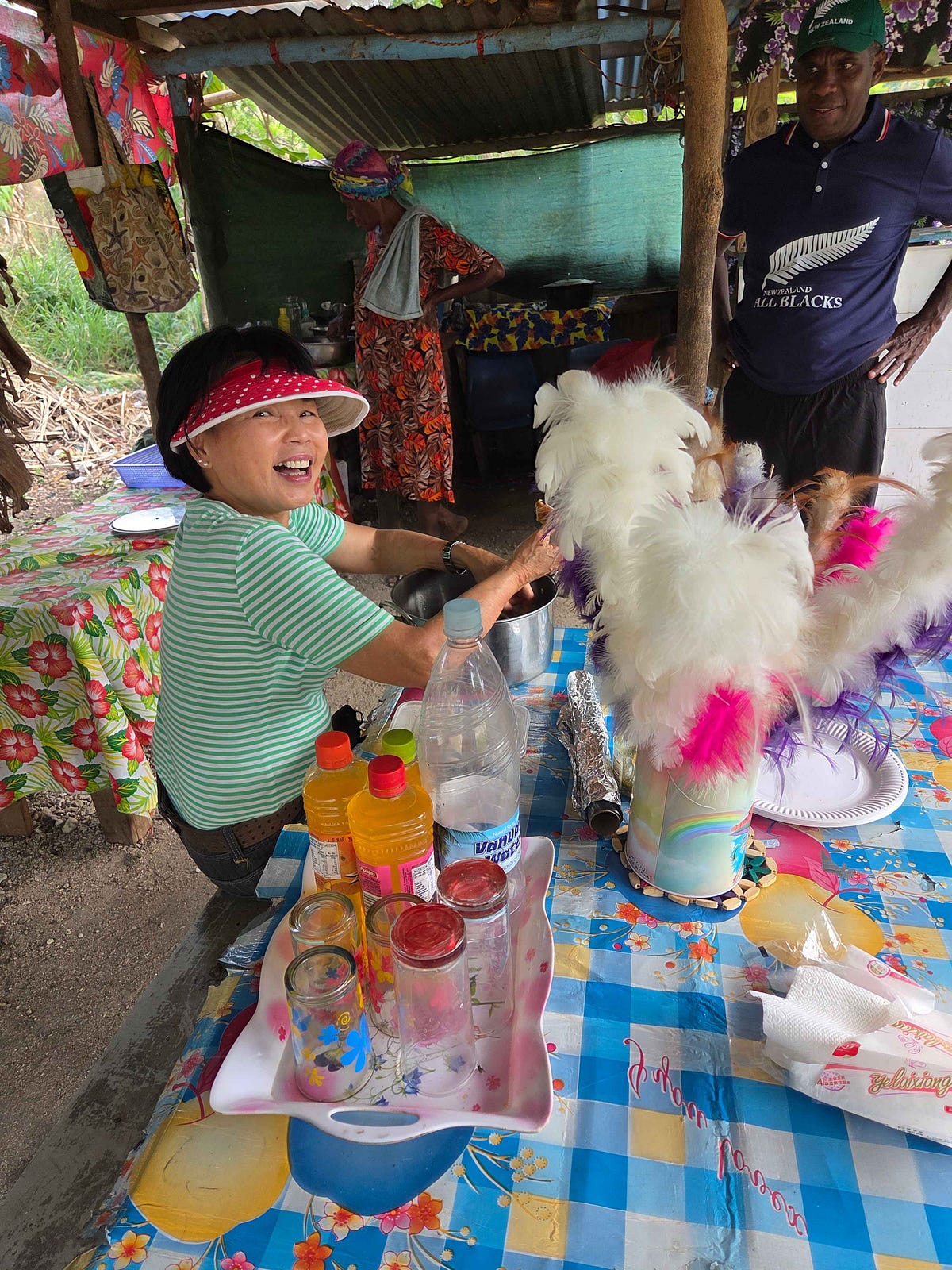
And we came across a sign advertising a local cooperative.
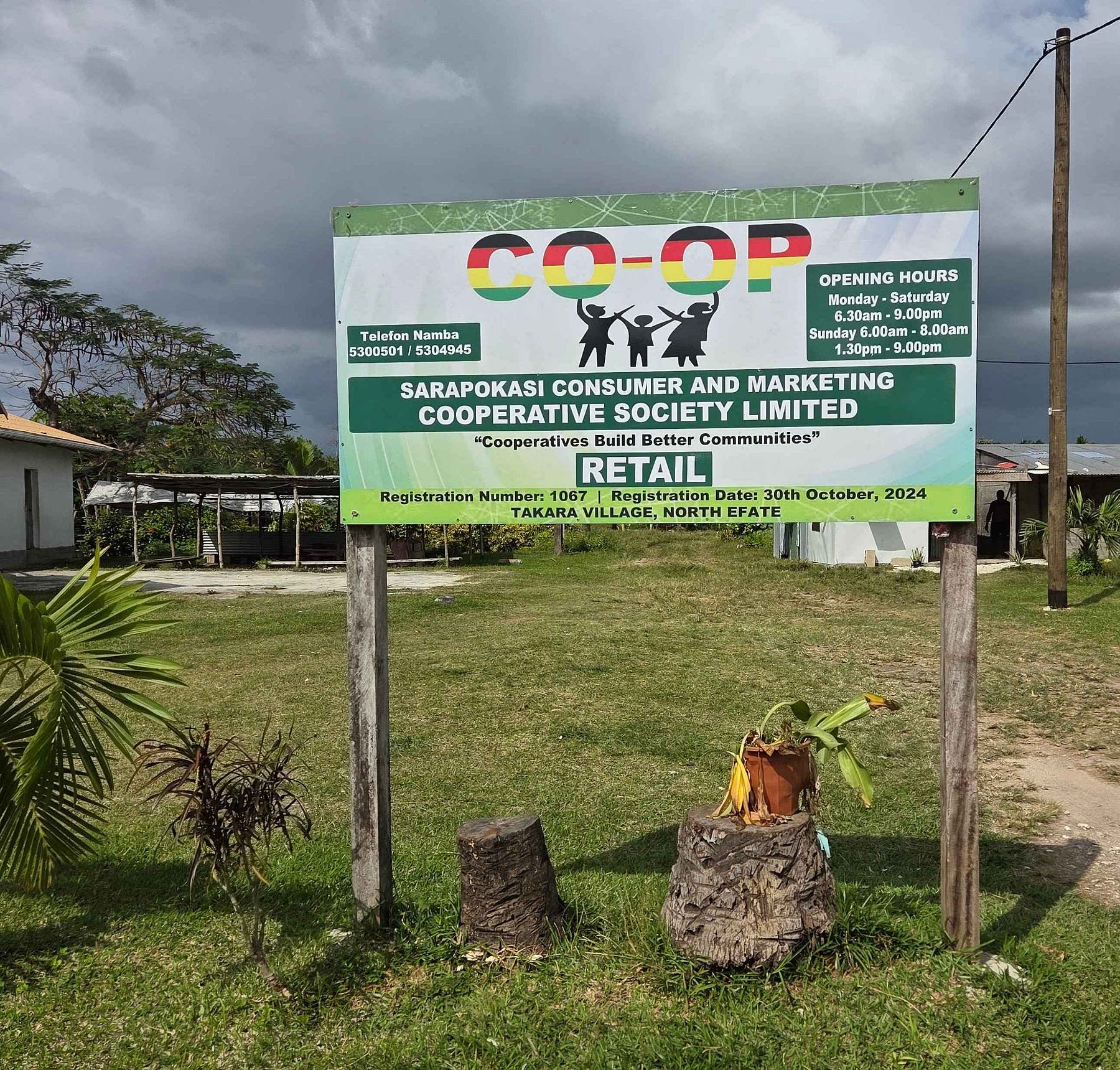
In the interior of the island, there is also a Community Conservation Area, or in other words, a sort of national park. You can see it marked out in the billboard map at the start of this post.
Carrying along the north coast, westward now, we went past another resort called Whispering Palms.
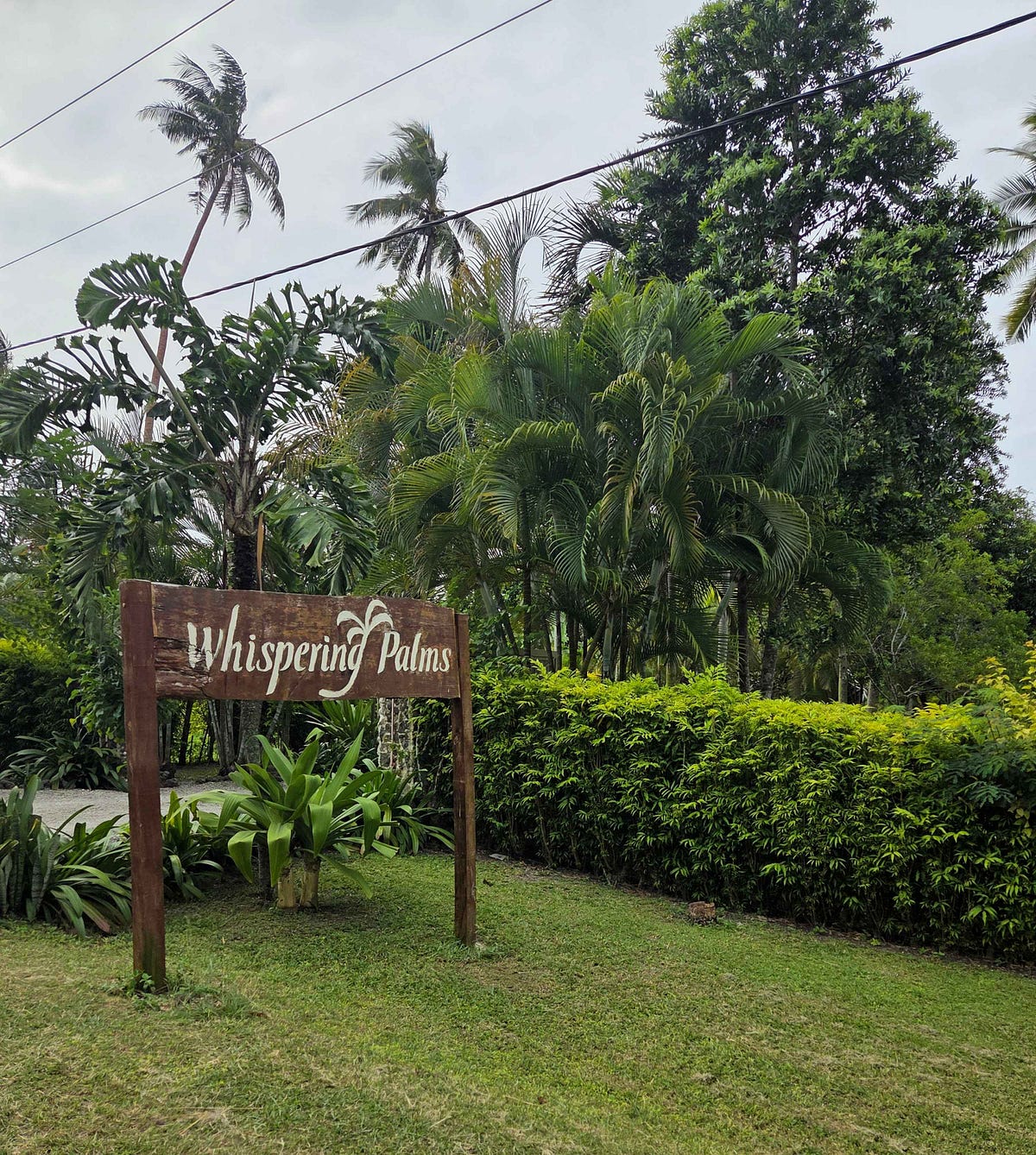
And then Siviri, where there is a charming beach and a publicly accessible cave called the Valeva Cave.
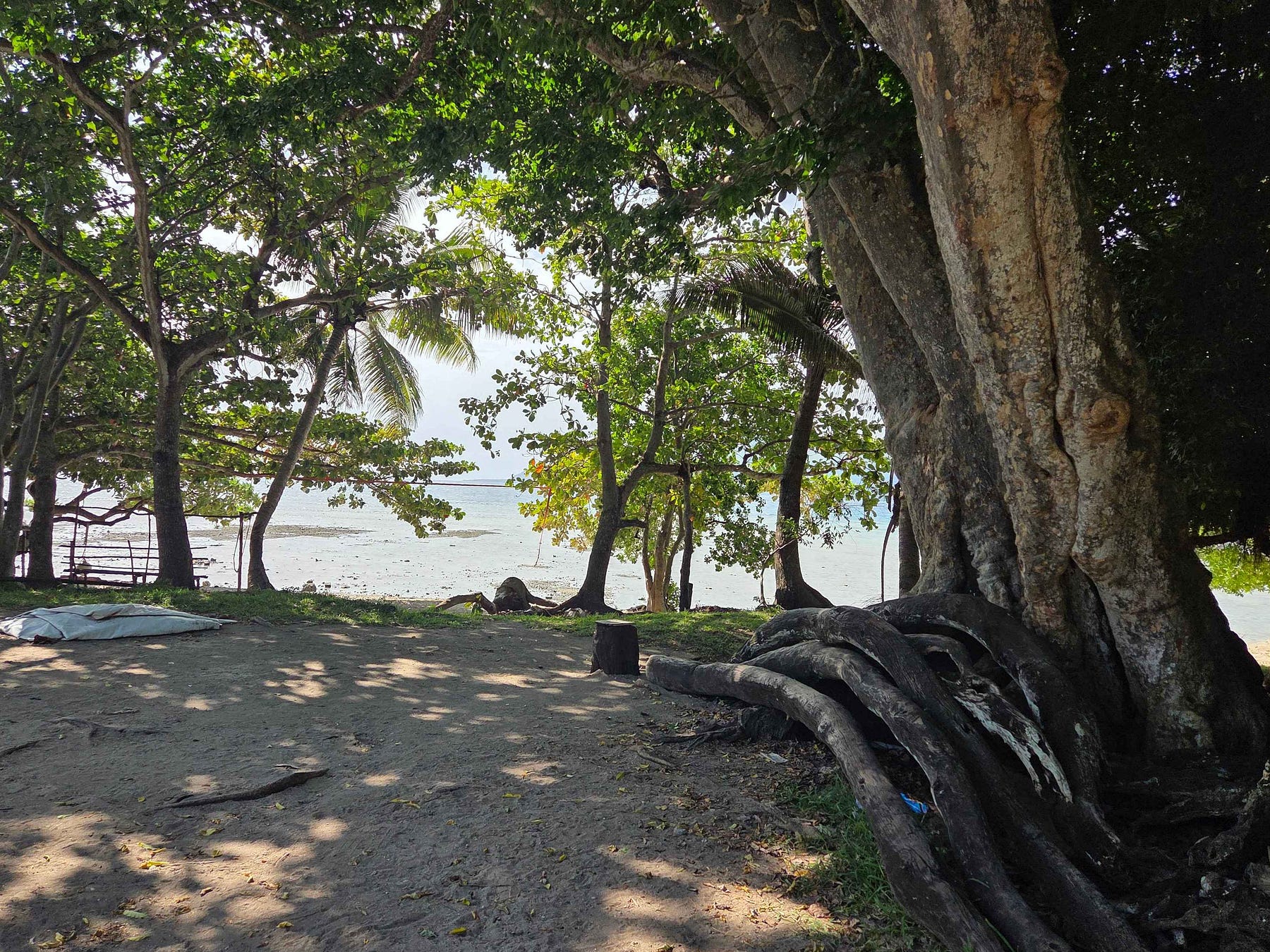
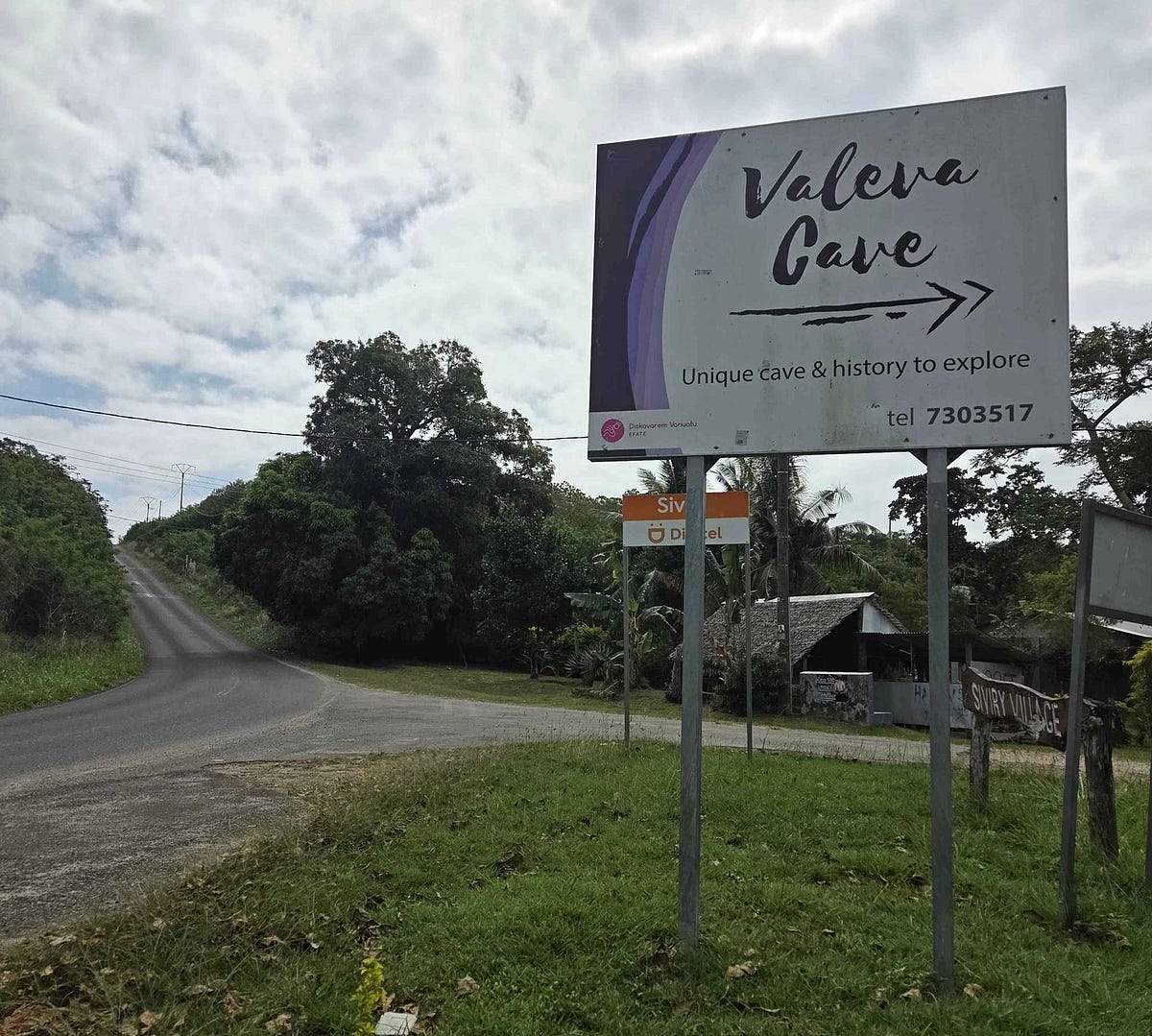
Here is a video I made of three beaches along the way: at Siviri; opposite Emao Island; and Eton Beach, which was overcast at the time but still had a lovely blue stream leading down to it (crystal-clear waters are a feature of Vanuatu):
Along the way, though, I couldn’t help noticing coconut palms that had been killed off by the coconut rhinoceros beetle, which I mentioned in last week’s post.
Vanuatu does have its share of disasters and is turning to the World Court for relief from the ones that are related to climate change.
After Siviri, we arrived at Havannah Harbour, which is spelt that way and not Havana, where I checked into the Second Home Havannah.
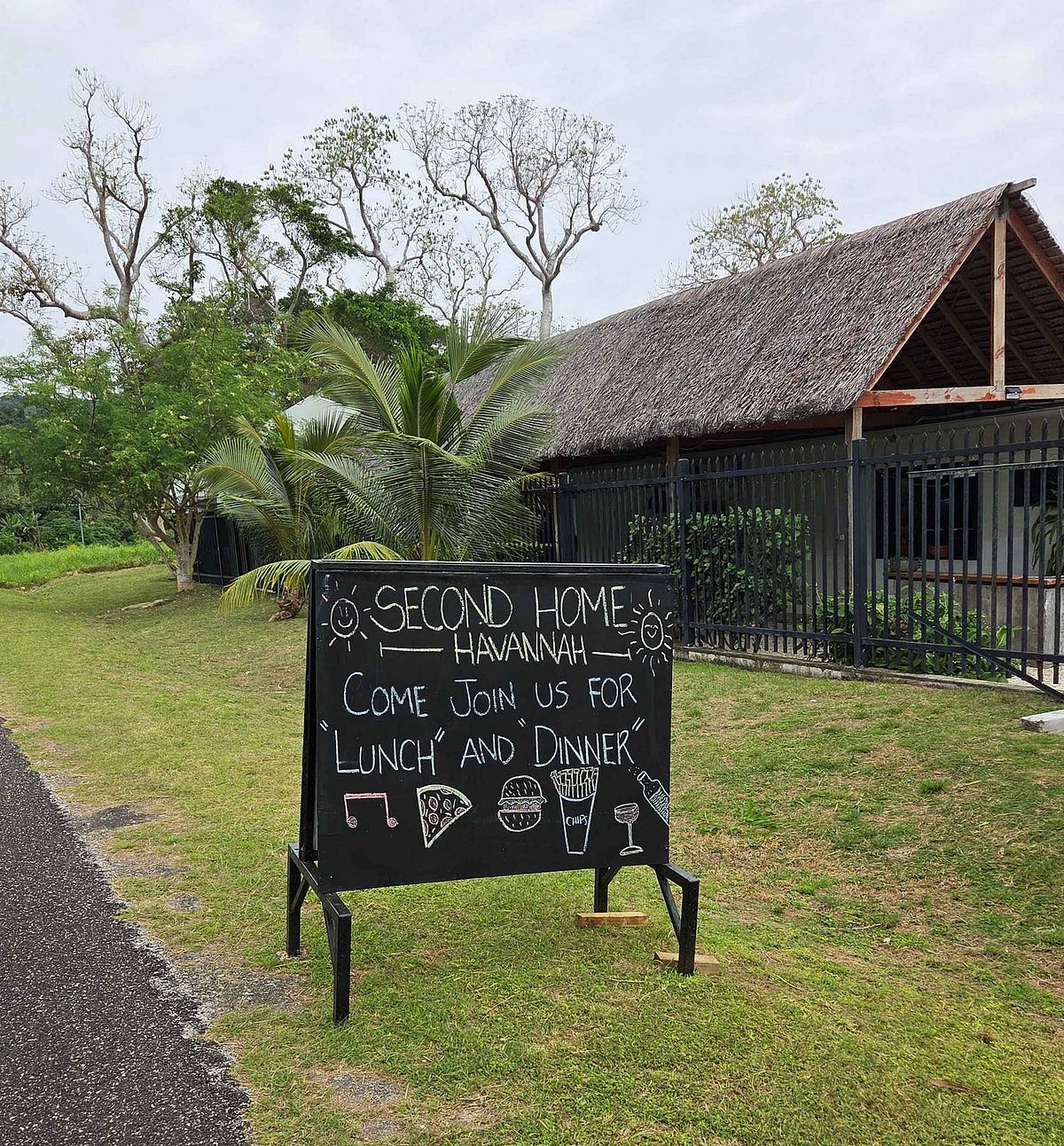
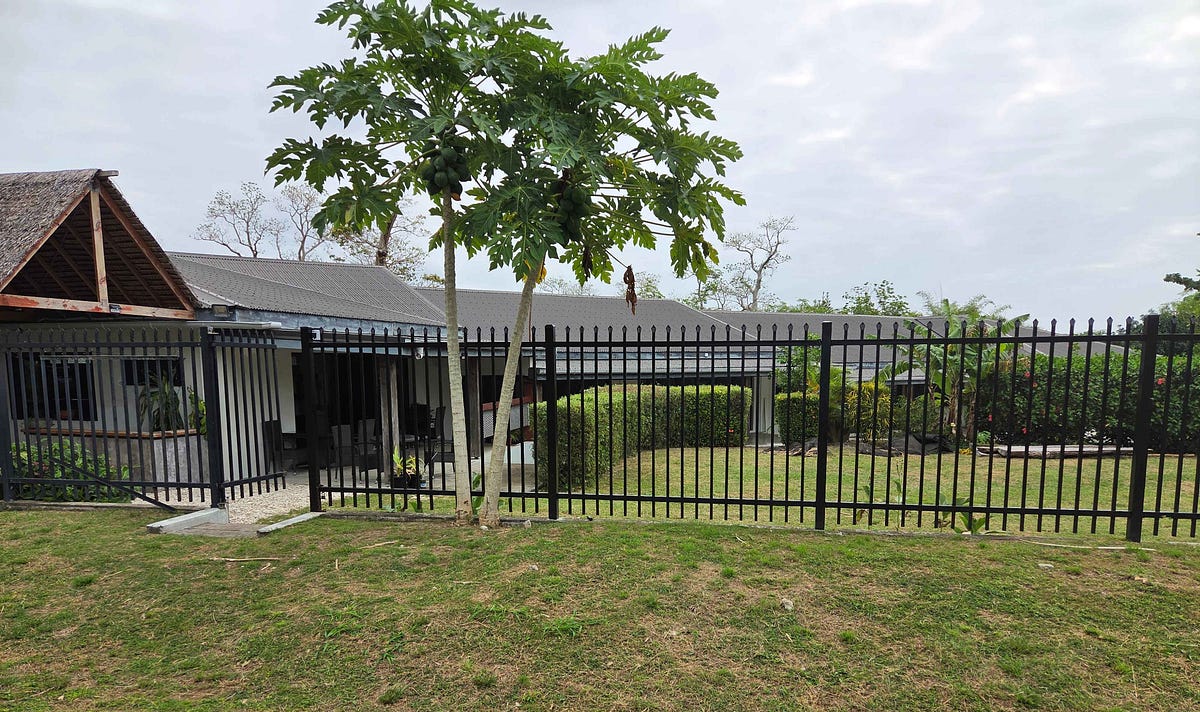
I spent three nights at Second Home Havannah. I think it cost me NZ $200 for three nights, and it was super-quiet, with no roosters at 1 am, no drunk people, and no dogs. I got a huge meal of fish and chips for VT 2,000; the food was lovely. They have six-bed dorms that would be great for a family, and there is snorkelling down on the beach.
You can have a freshwater swim here as well, in the American pool, which sounds as though it was built for the troops in World War II.
Havannah was a sizable wartime base. Indeed, the ring road around the island was built by the Americans during World War II. You can read more about the American presence, which greatly outnumbered the local population at the time, here.
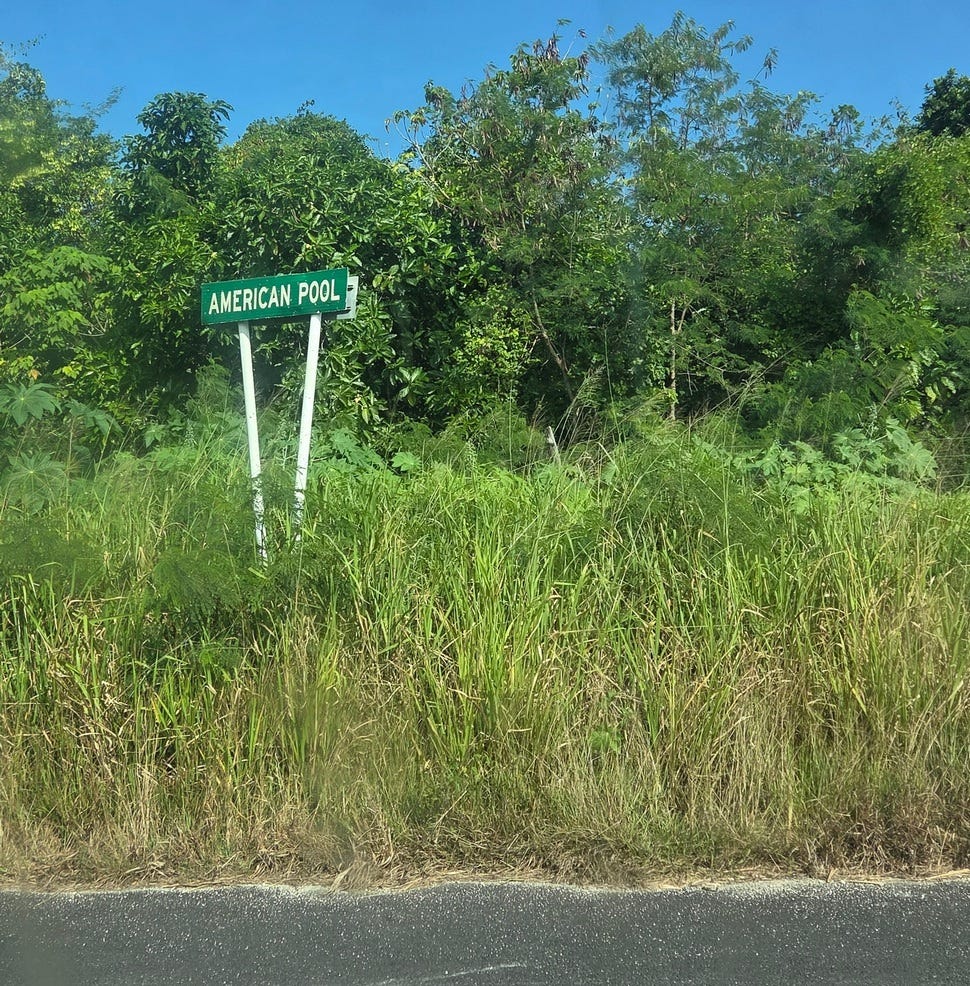
There are several other places to stay and/or dine in this popular tourist district, such as the Reflections Retreat, the Havannah Dream Club, The Havannah Vanuatu, the Trees & Fishes Private Retreat, and the Gideon’s Landing Eco-Lodge and Havannah Eco-Lodge (not yet an https site). Some of them are quite a bit pricier than Second Home.
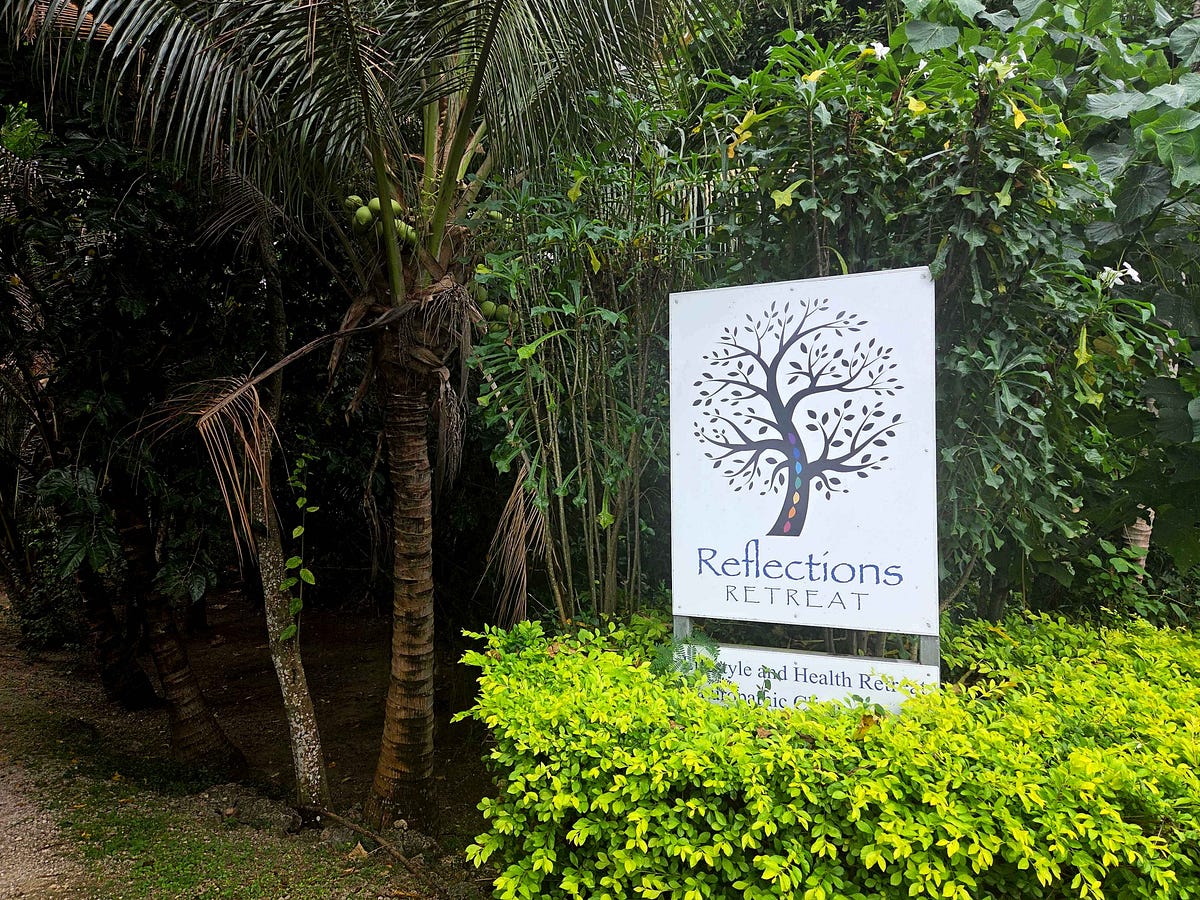
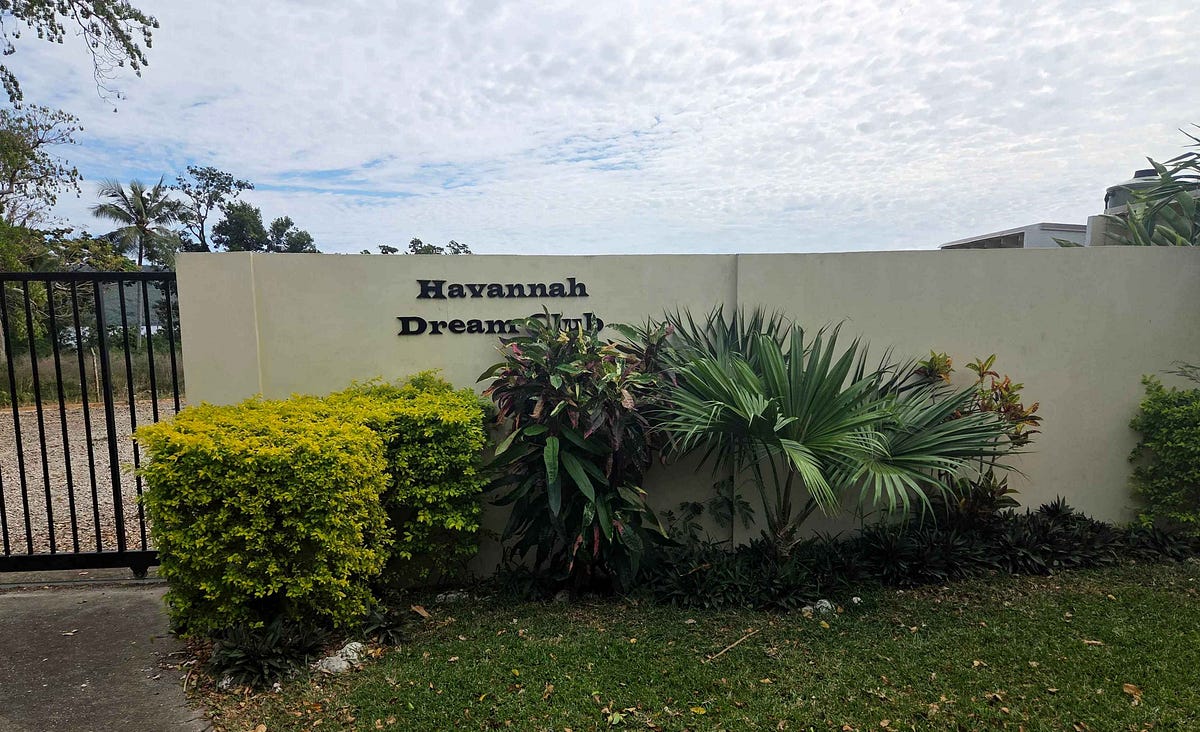
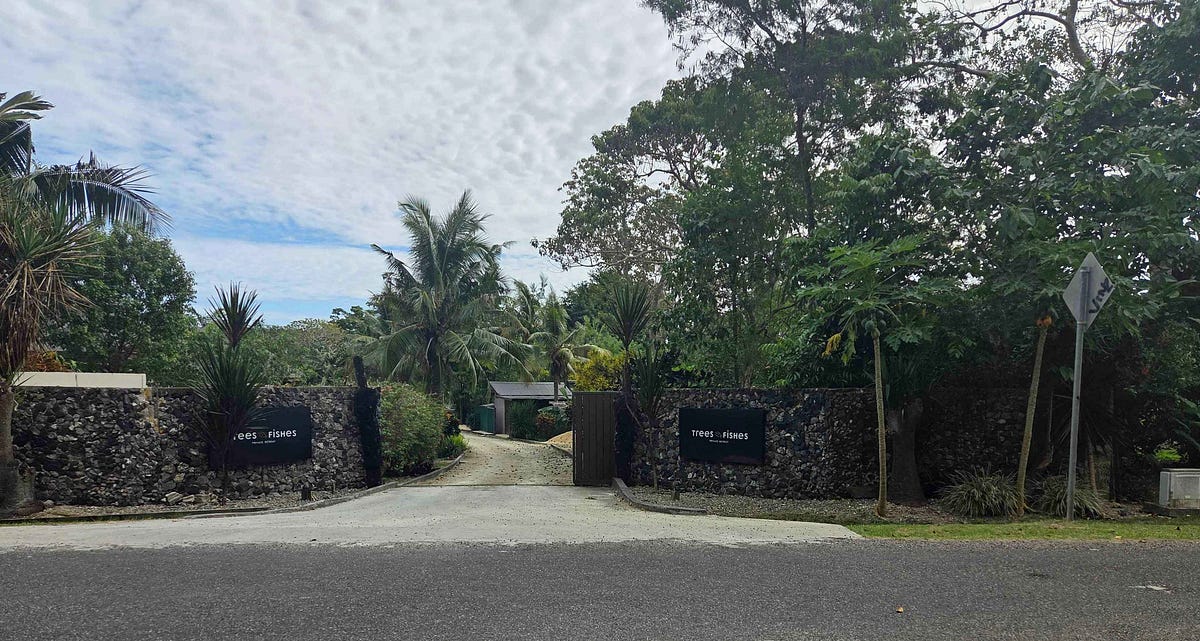
Havannah Harbour seems to be the most touristy bit of the northern end of Efate. Since this section of coastline runs from north to south, it also has amazing sunsets over the offshore islands of Lelepa and Moso.
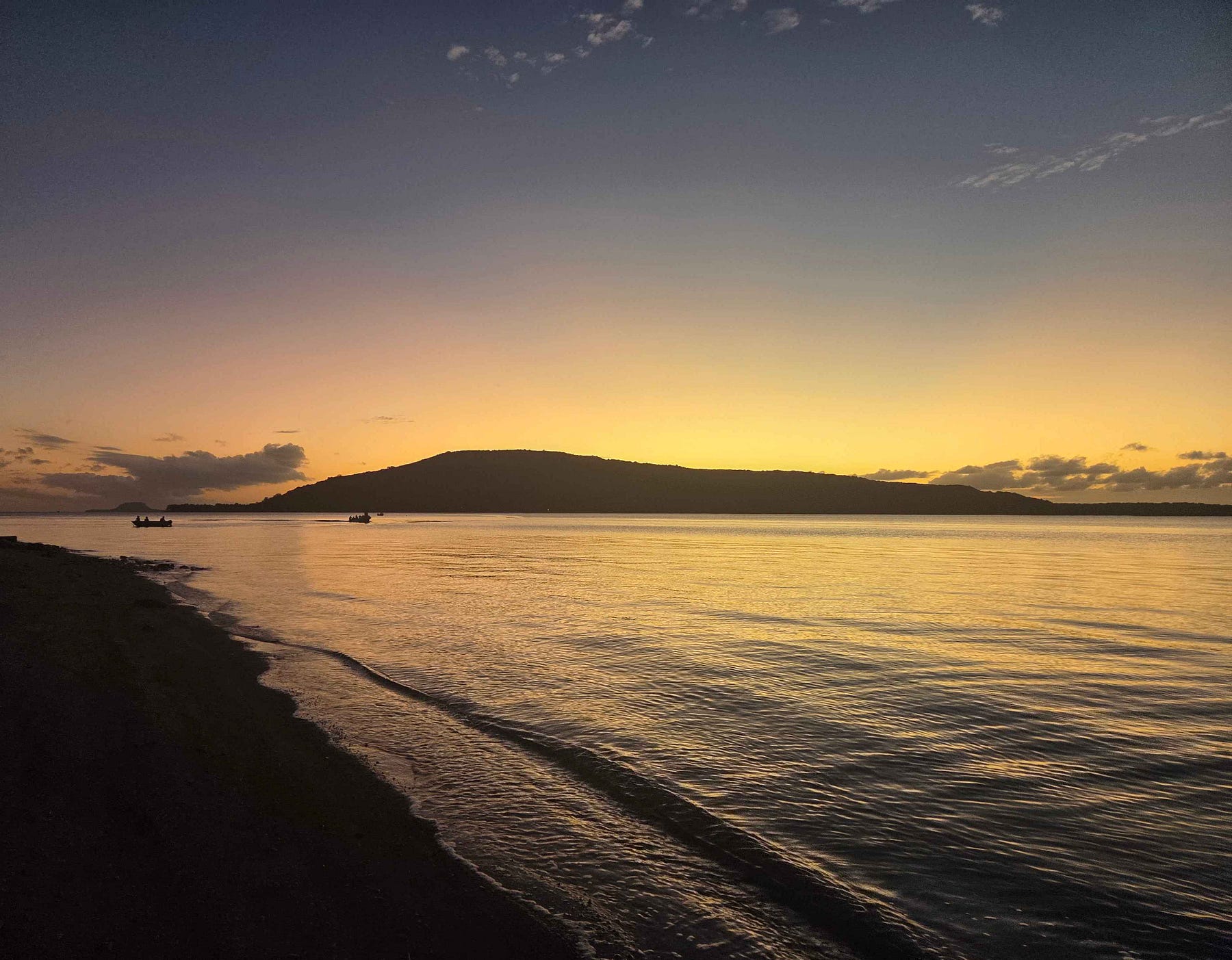
Havannah Harbour is getting a marina, and quite soon there will be cruise ships visiting.
I heard that the southern part of the island had been relatively destroyed by the earthquake, cyclones, or both, but that the north was relatively untouched.
Carrying on southward, we arrived at Klehm’s Hill, where there is a lookout over Mele Bay, Port Vila, and Hideaway Island.
And then a little further south, we came to Mele, on Mele Bay, west of Port Vila. At Mele, there was an old mission station, part of which has been converted, these days, into the premises of the Blue Pacific Coffee Company, part of Tanna Coffee, which is otherwise based on the active volcanic island of Tanna, about 200 km to the southeast of Port Vila.
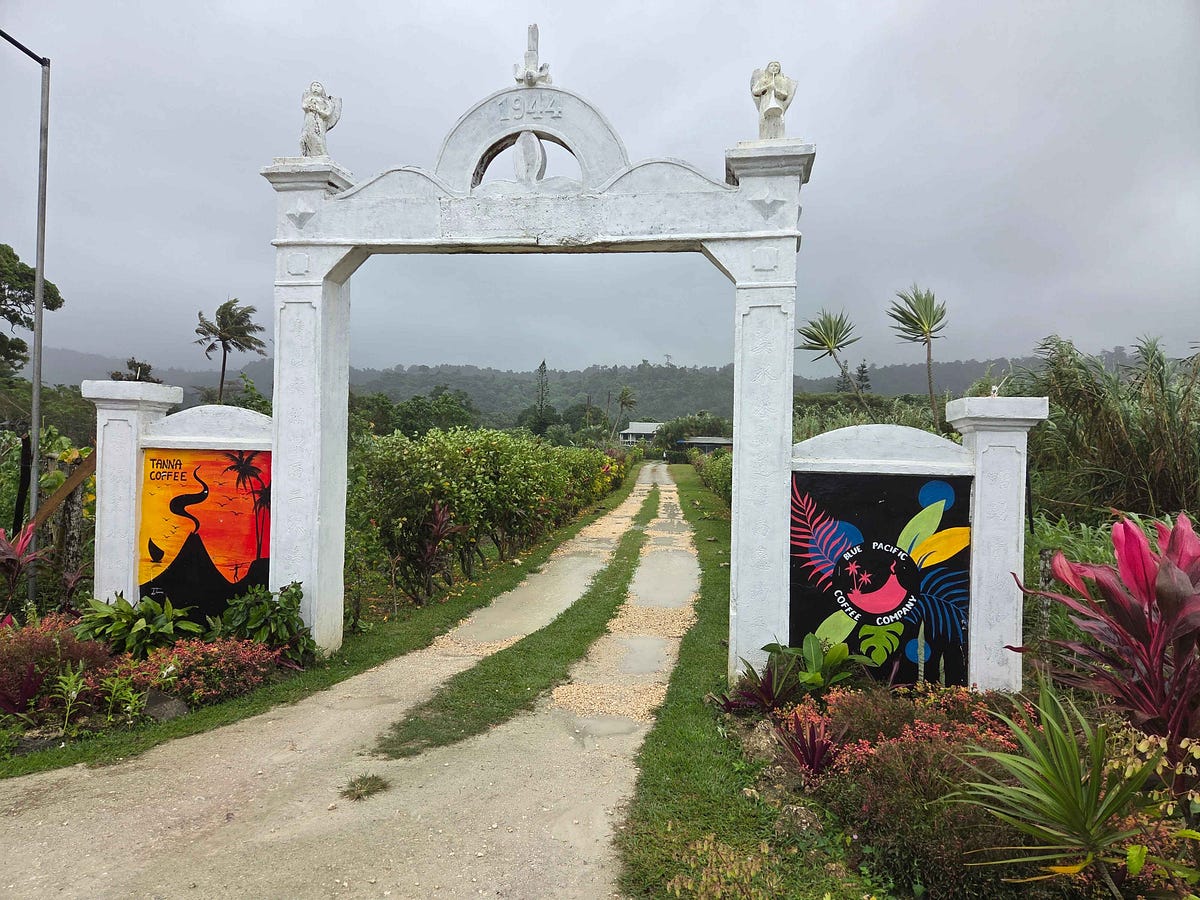
Whence the logo. Incidentally, I will visit Tanna in the next post in this series.
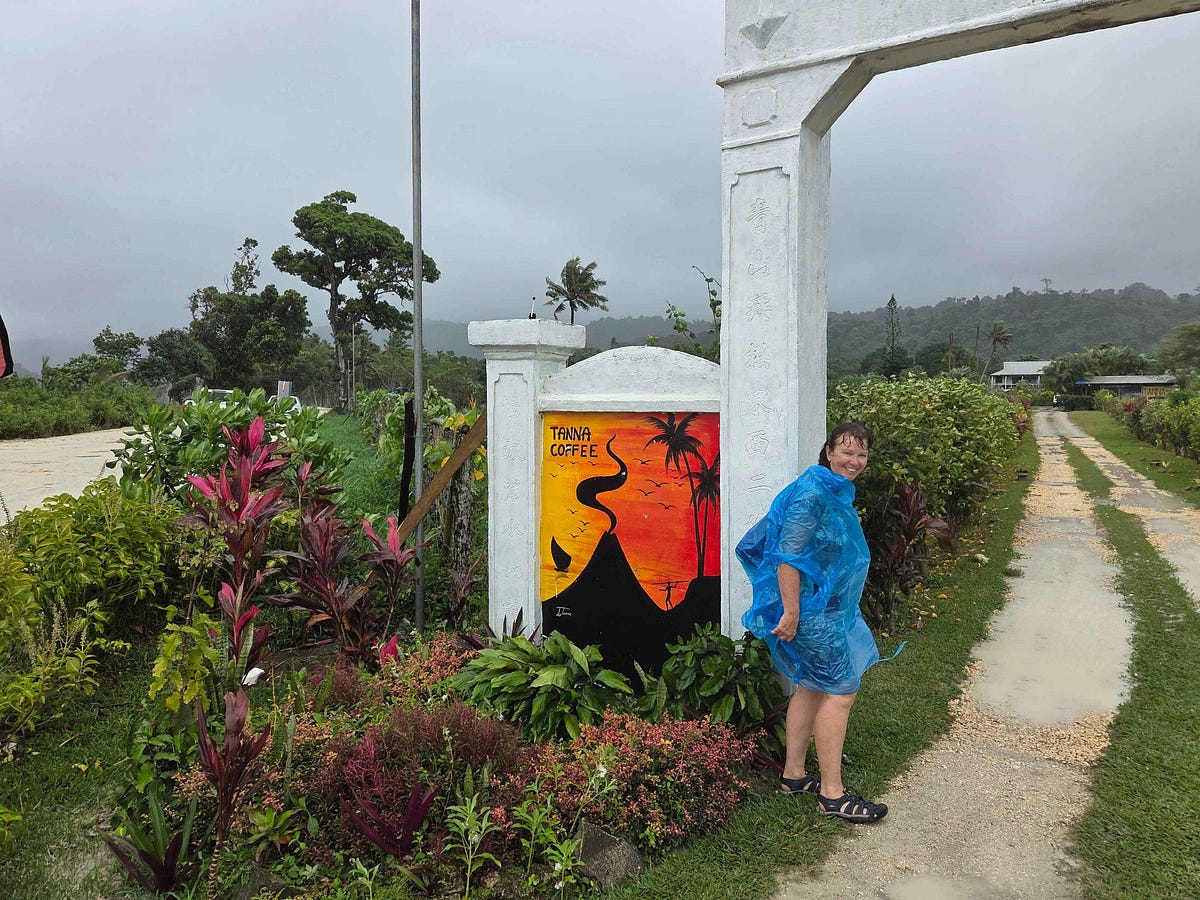
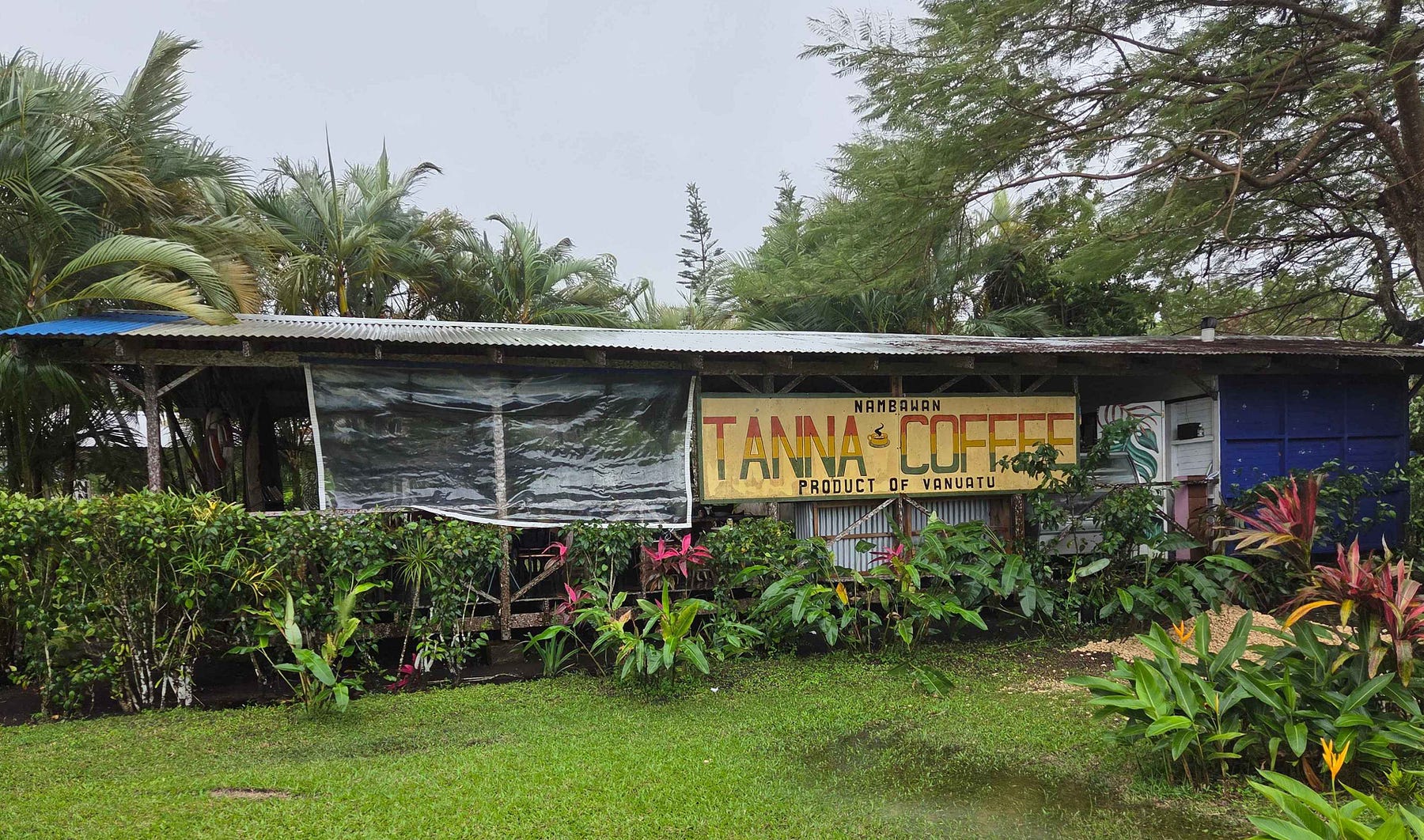
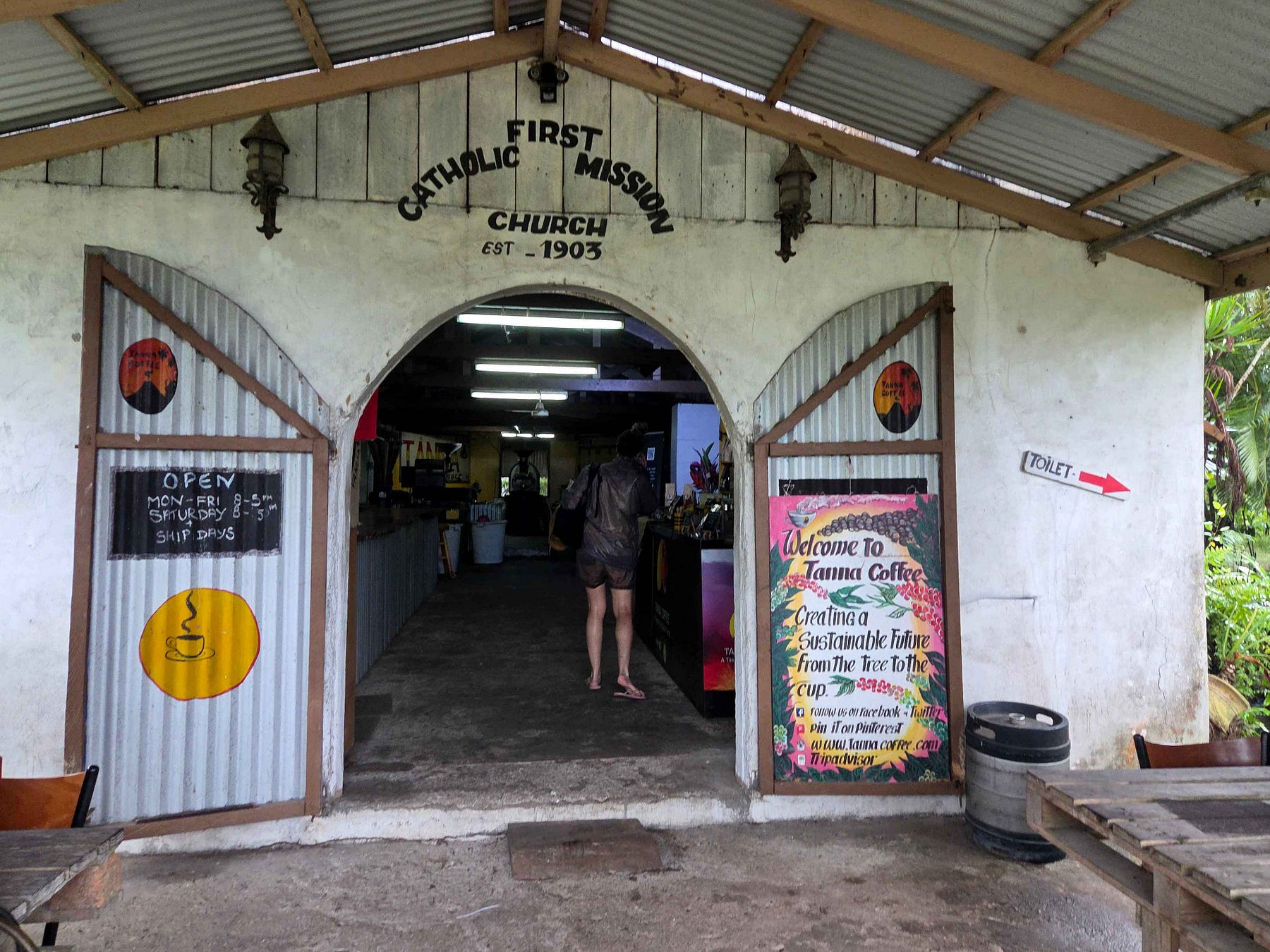
Other things to see in this area, which has many good lookouts over the bay, are the Mele Cascades Waterfall, the Summit Gardens, and the Vanuatu Sky Bridge. The names themselves give you the idea.
At Mele, there is also the Kava House Vanuatu, where you can sample different varieties of kava, an intoxicating drink made from the roots of certain trees that grow on many Pacific islands, and known by the same name pretty much all over the South Pacific.
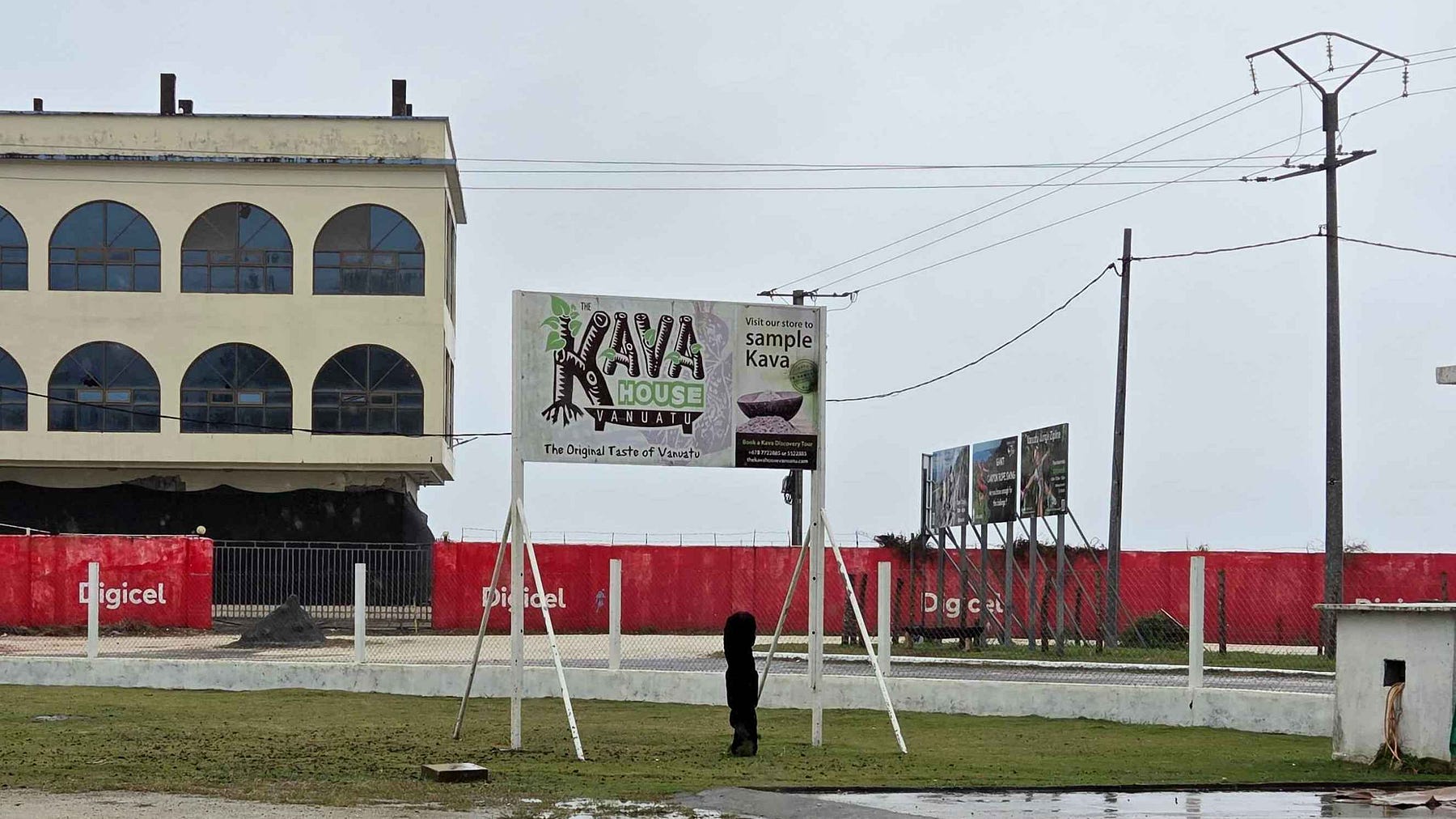
Kava tastes like a mixture of mud and dishwater to the uninitiated, though I suppose you get used to it after a while. It makes your mouth go numb, a sign that its psychoactive chemicals are already burrowing into the nerve endings.
Historically, the taking of kava had a shamanic significance, a sense that survives even in the Māori language of New Zealand as kawa, the word for protocol, though kava trees don’t grow in New Zealand. However, these days, lots of young men in Vanuatu, and no doubt in other places where it can be obtained, get drunk on kava, and so some people are reluctant to go out late at night for that reason.
I was told by a reliable person that the kava in Vanuatu is the strongest in the Pacific and that it builds up in the system, and that if you take it for four days, it has a bad effect on the fourth day. It causes kidney damage, and heavy users get red eyes.
Just south of the Kava House, there is the lovely Hideaway Island, where I went next to stay for a little while, read a book, drink some Island Chill (a Fijian brand of mineral water, not the cannabis-laced American drink of the same name), and go snorkelling.
I paid NZ $70 a night for a dorm bed on Hideaway Island.
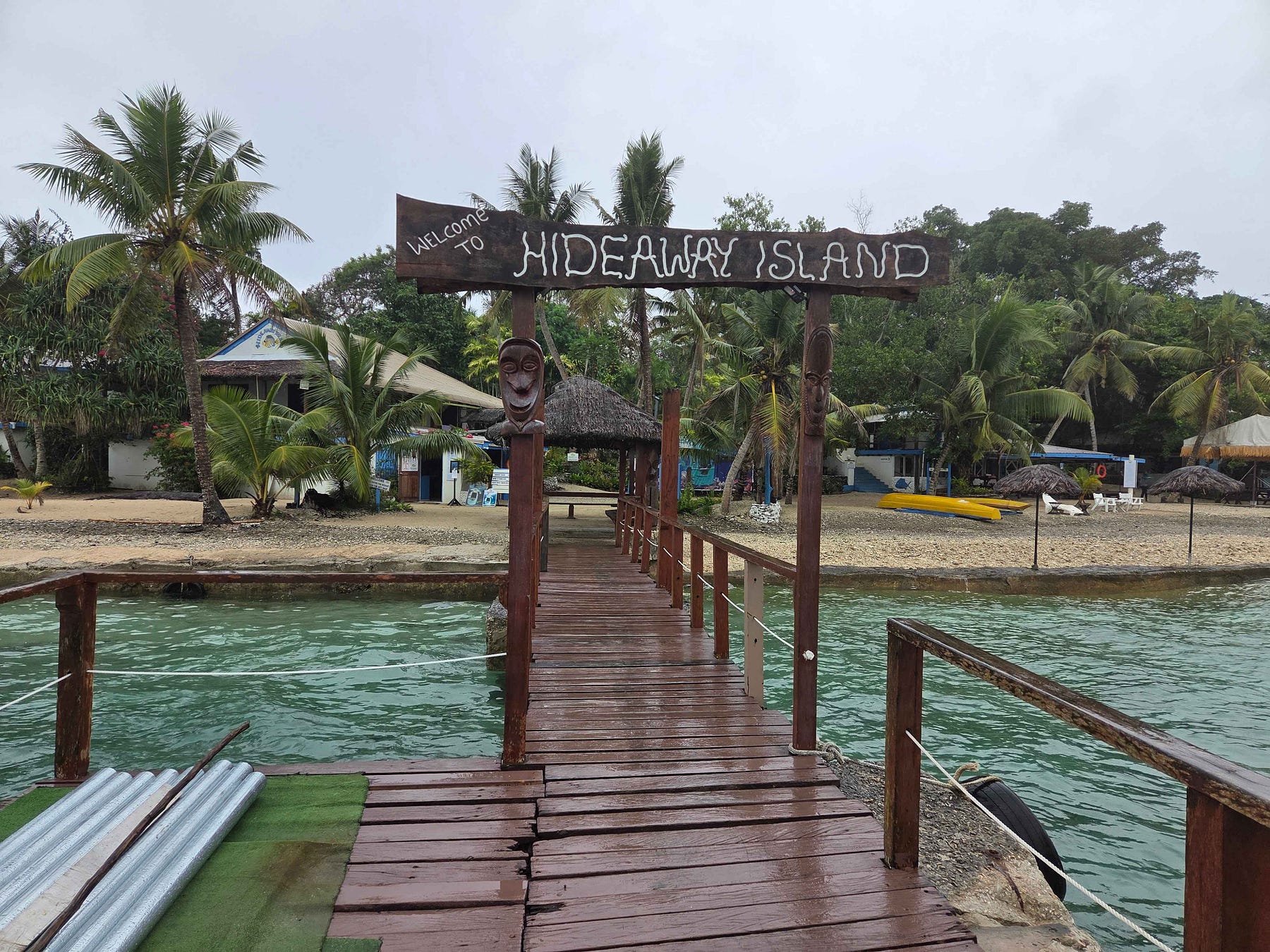
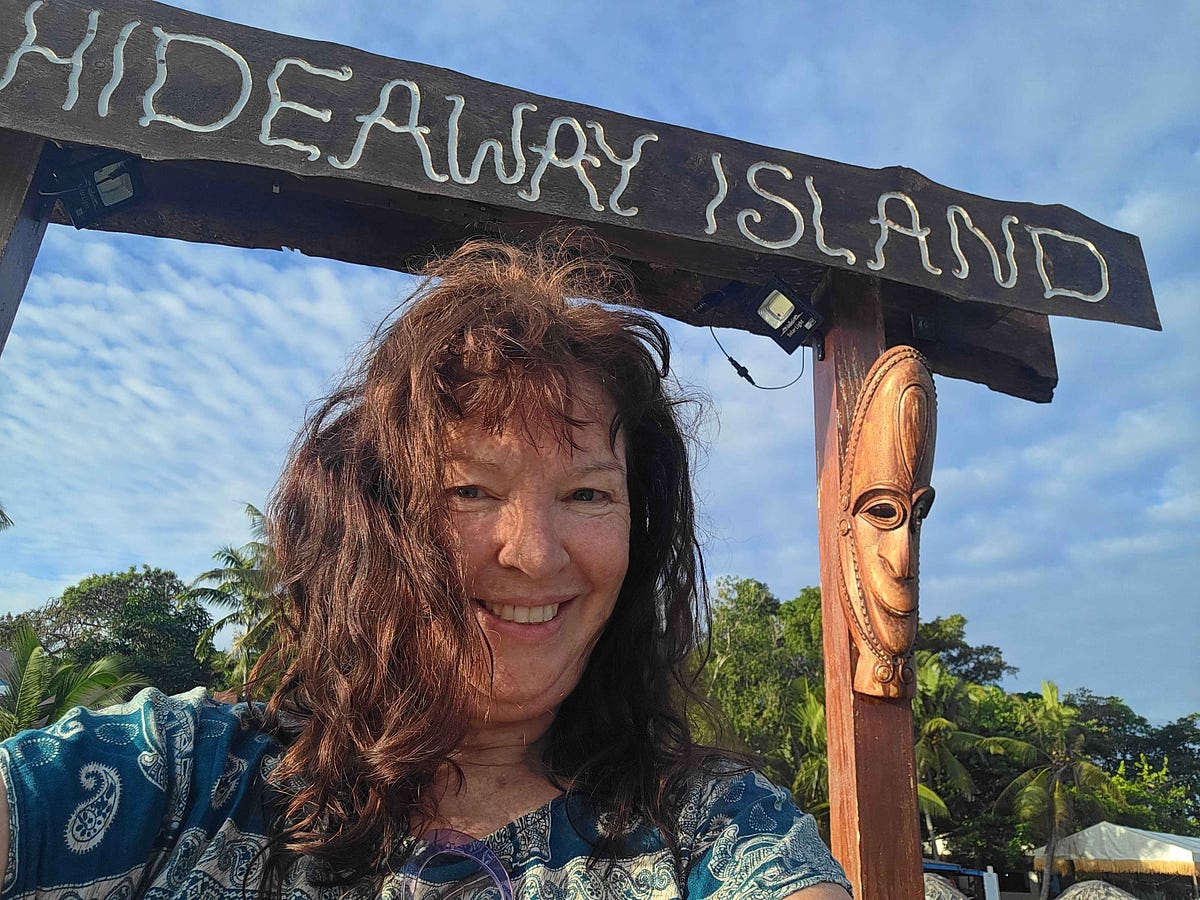
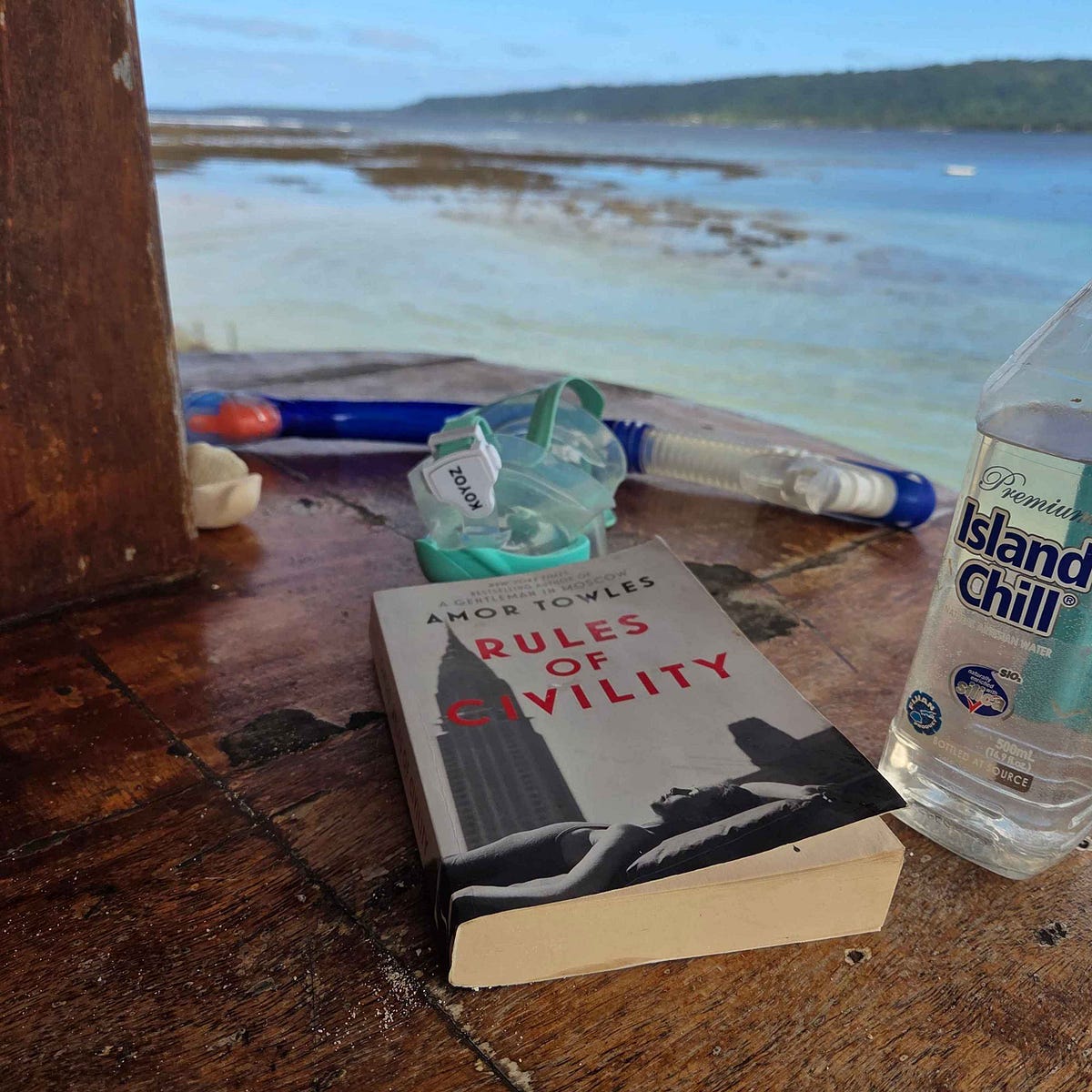
Here’s a video I’ve made of Hideaway Island at sunset:
I went downtown, into Port Vila, and found that some of the ATM machines were not working. Eventually, I found one next to the earthquake-damaged casino.
You get a free snorkel class at 12:15 on Hideaway Island. Everything you use here is free, including the snorkels and kayaks. The food here is at New Zealand prices, which is quite normal, and it is really quiet here as well. I’ve really enjoyed it!
I forgot to mention that the wildlife of Vanuatu includes sea turtles and also giant land crabs, or coconut crabs, which live on land and are the largest land-dwelling arthropods (the insect/spider/crustacean division of life), as they can weigh more than 4 kg!
I wasn’t sure if I ever got to see any coconut crabs, as they really only come out at night. You can see the turtles when diving, and also at a pair of sanctuaries, though I think that one has closed because of the earthquake.
The red or orange-coloured flame snapper Etelis carbunculus, a common variety locally, is quite often called ‘poulet’ in Vanuatu, pronounced pulay. Poulet is the French word for chicken, which the flame snapper is said to taste like.
So that’s something to watch out for, if a distant memory of having learned French in school makes you think you are going to get chicken!
As for the ring road, I should warn that it was full of potholes when we drove it, though I have heard that the Chinese are going to fix it.
Along with the earthquake, another reason that tourism is in trouble right now is that Air Vanuatu collapsed in 2024, since restarting limited domestic services. I flew to Vanuatu by way of Fiji Air, and it does seem that some of the international airlines are picking up the slack.
A domestic operator, Air Taxi Vanuatu, also had its operating licence suspended in 2024 after a pair of crashes, and that cannot have helped either.
A lot of businesses are for sale right now because of the earthquake and the tourism downturn. I hope things will recover.
Next week, I’ll be blogging about the island of Tanna and its active volcano, Mt Yasur!
Subscribe to our mailing list to receive free giveaways!